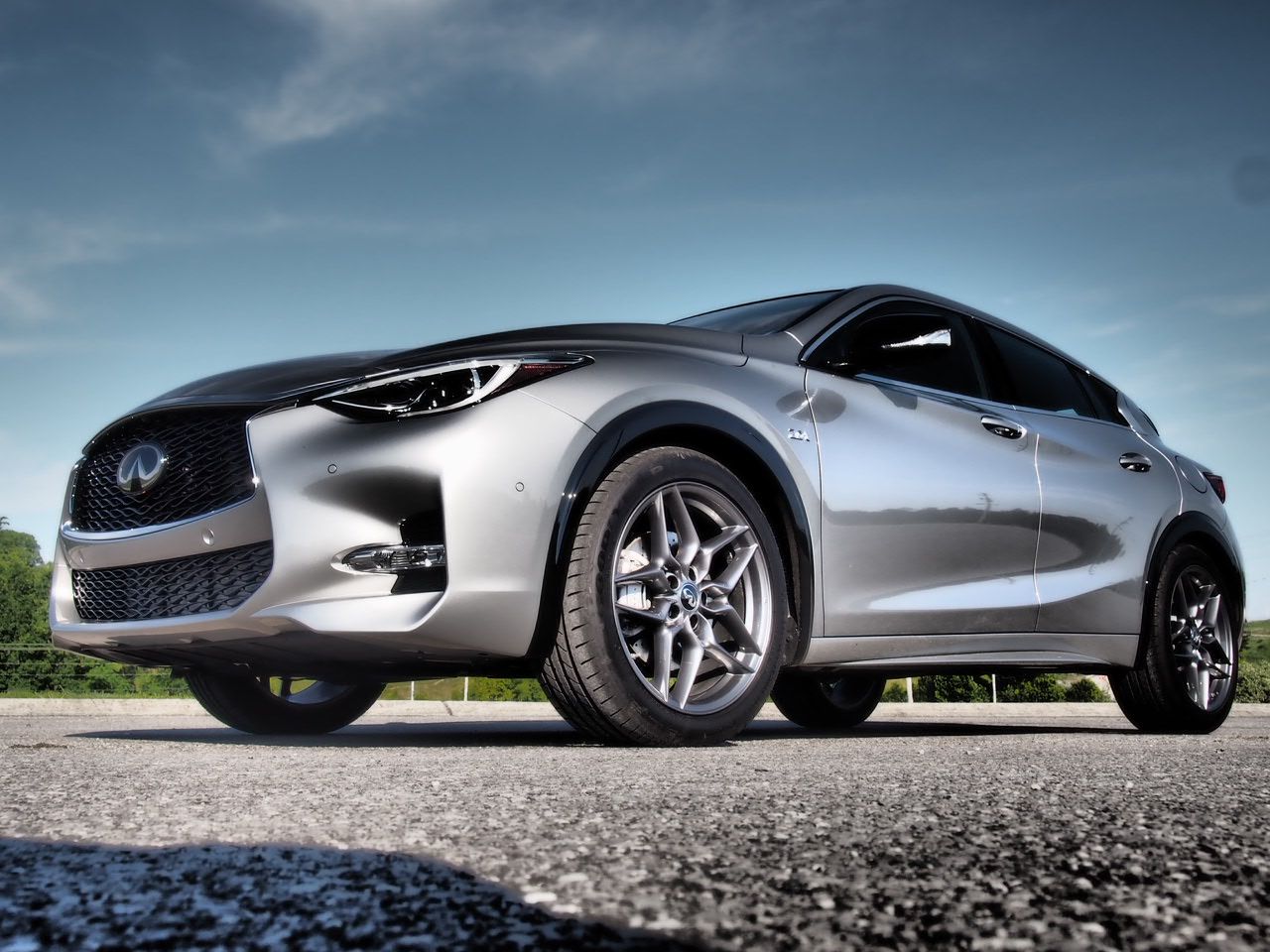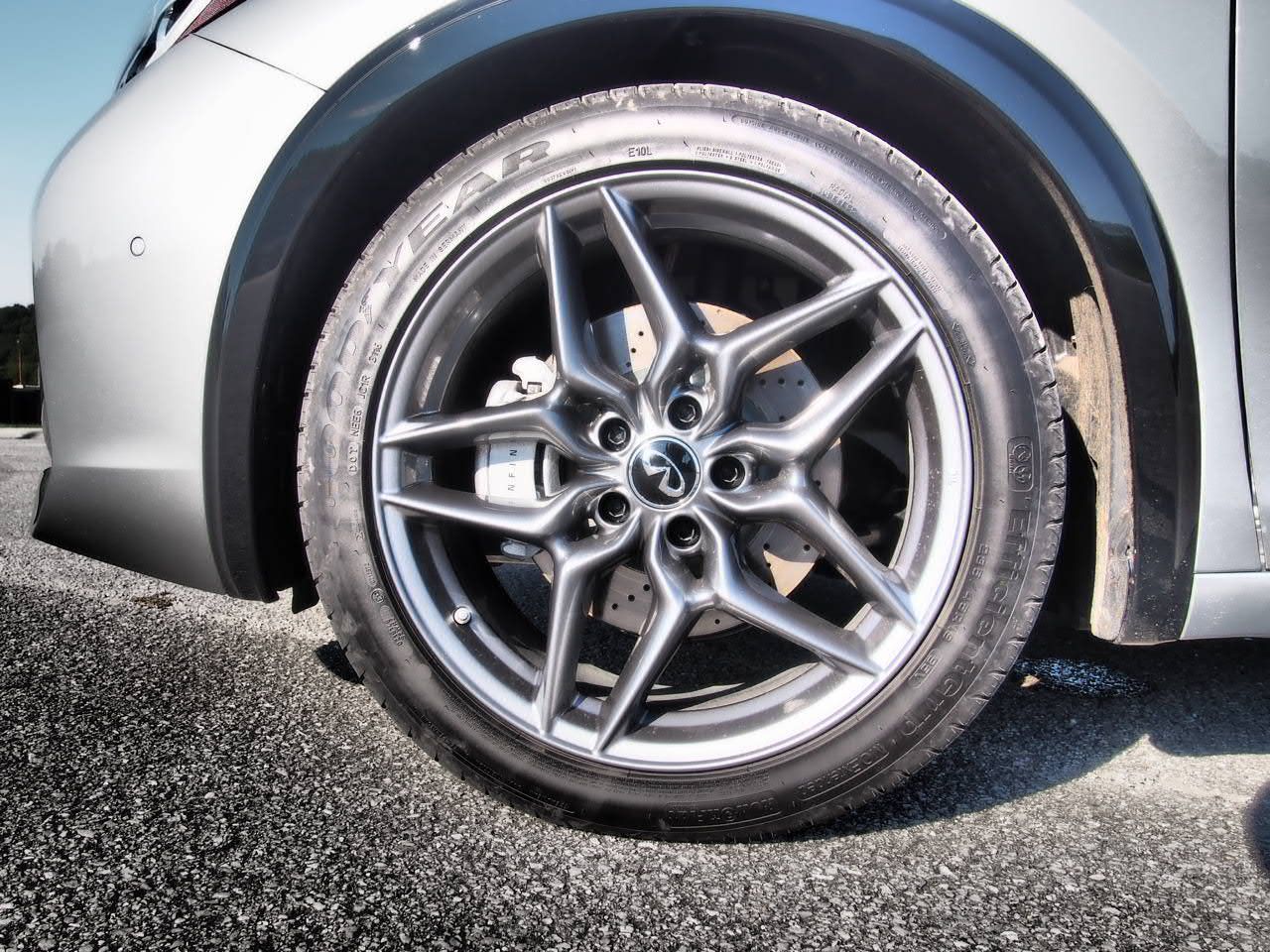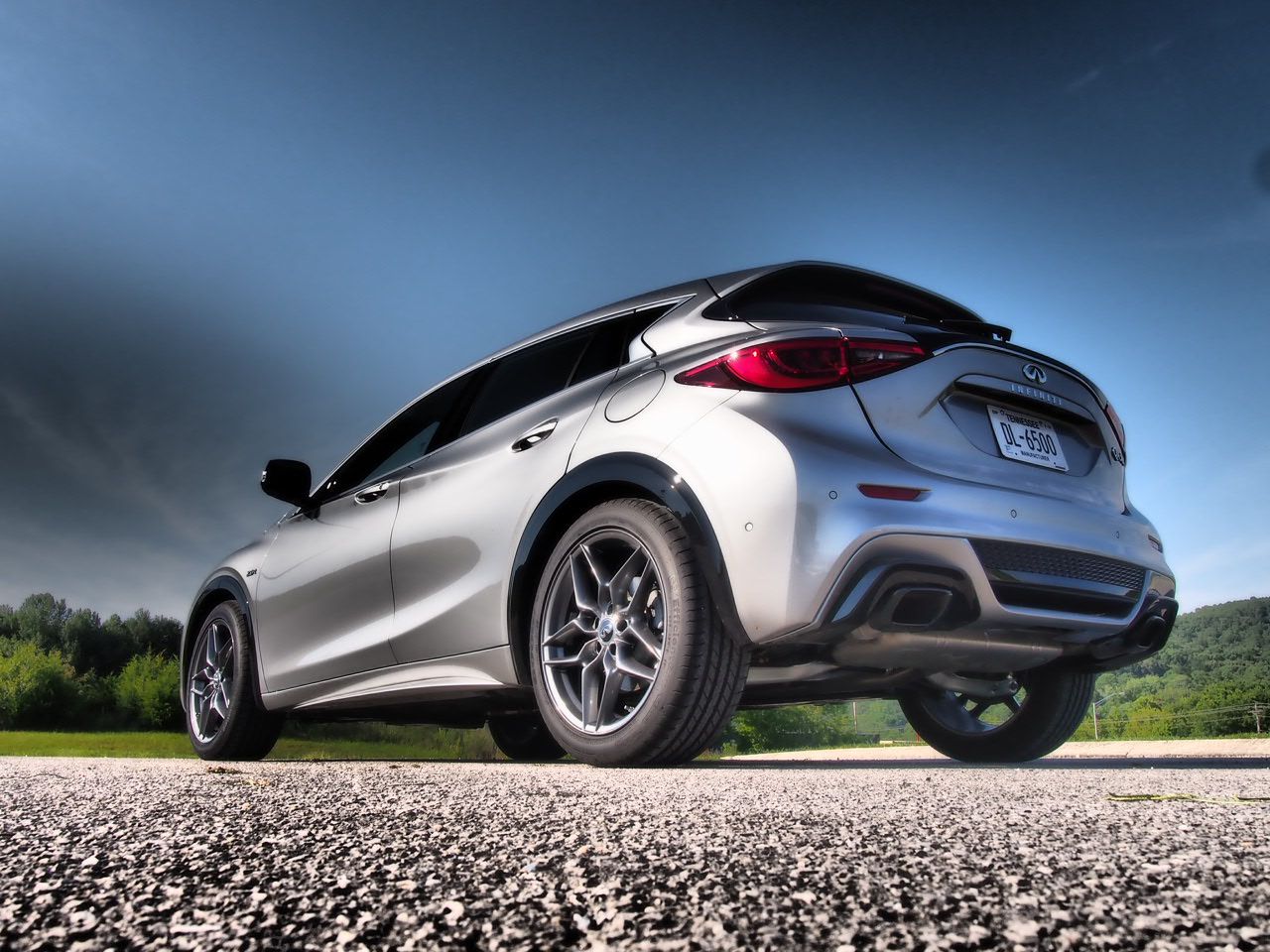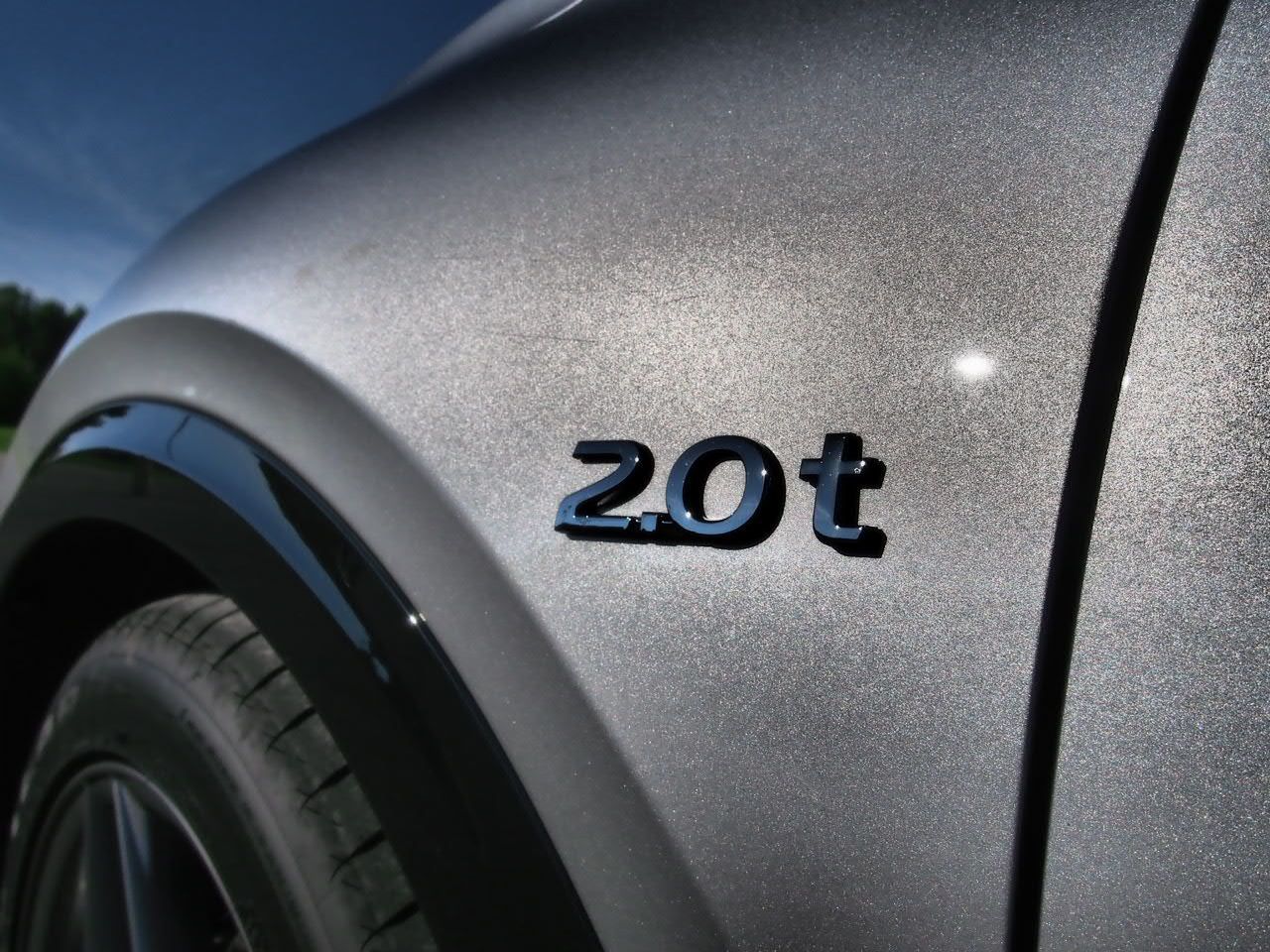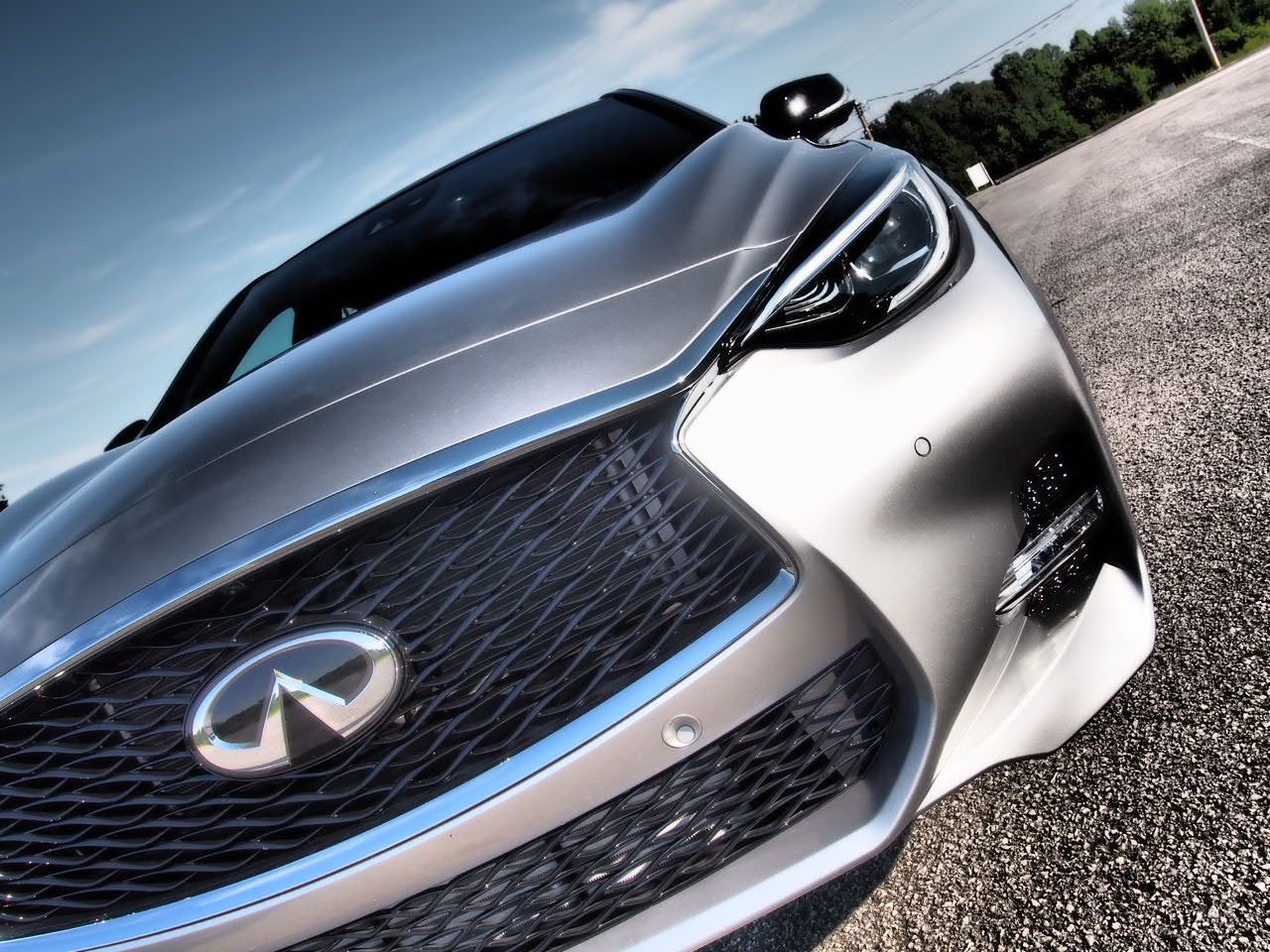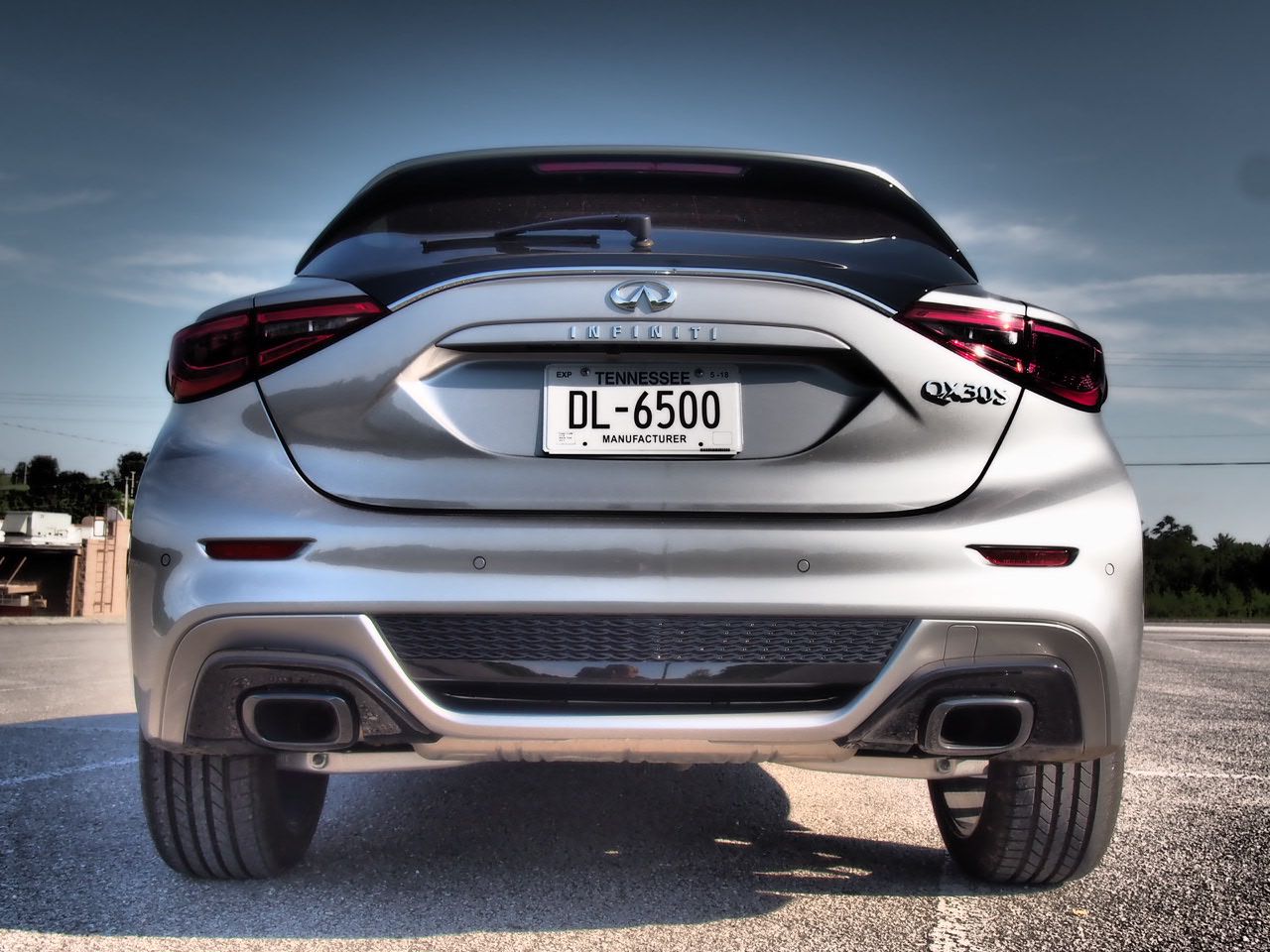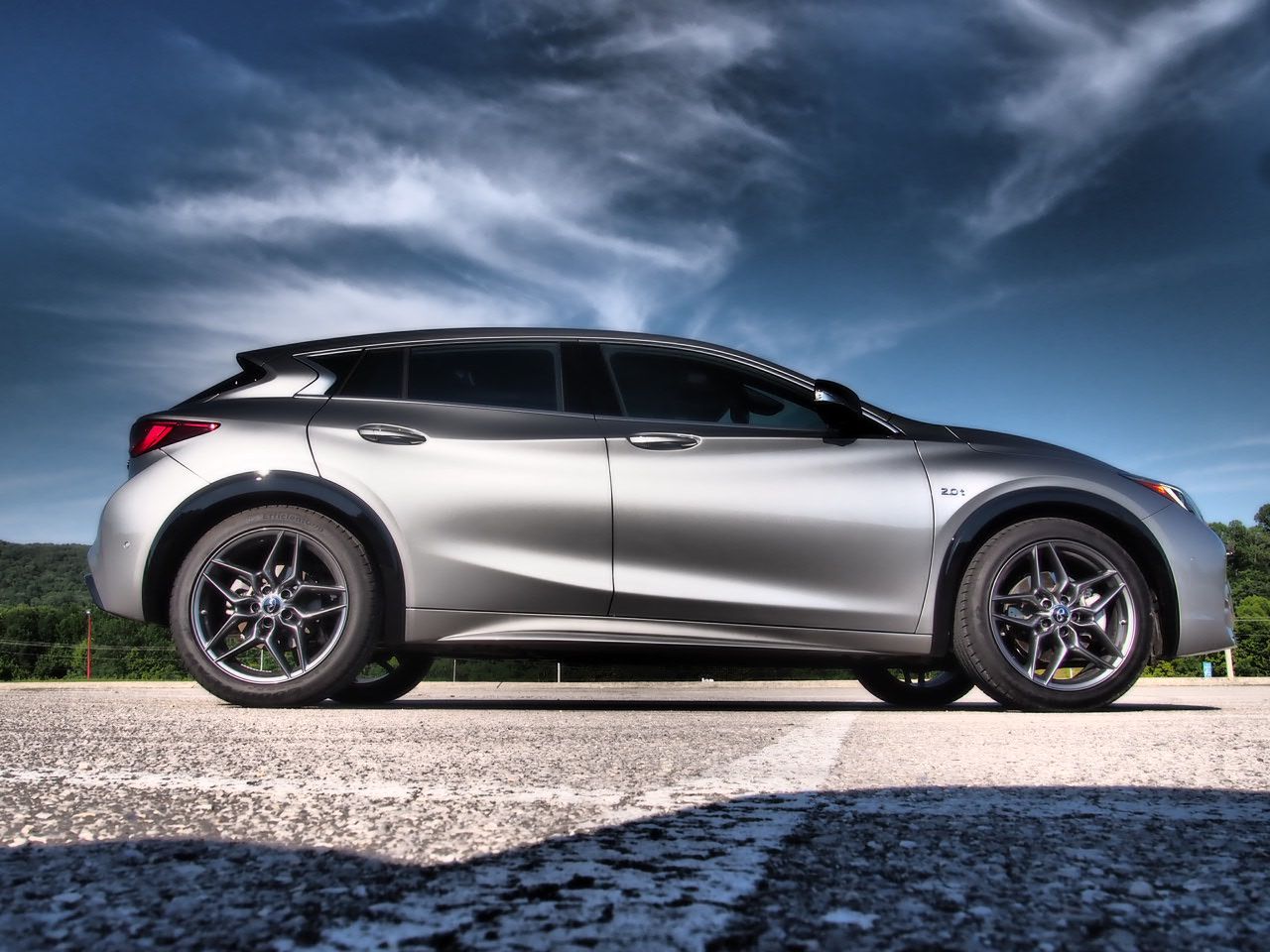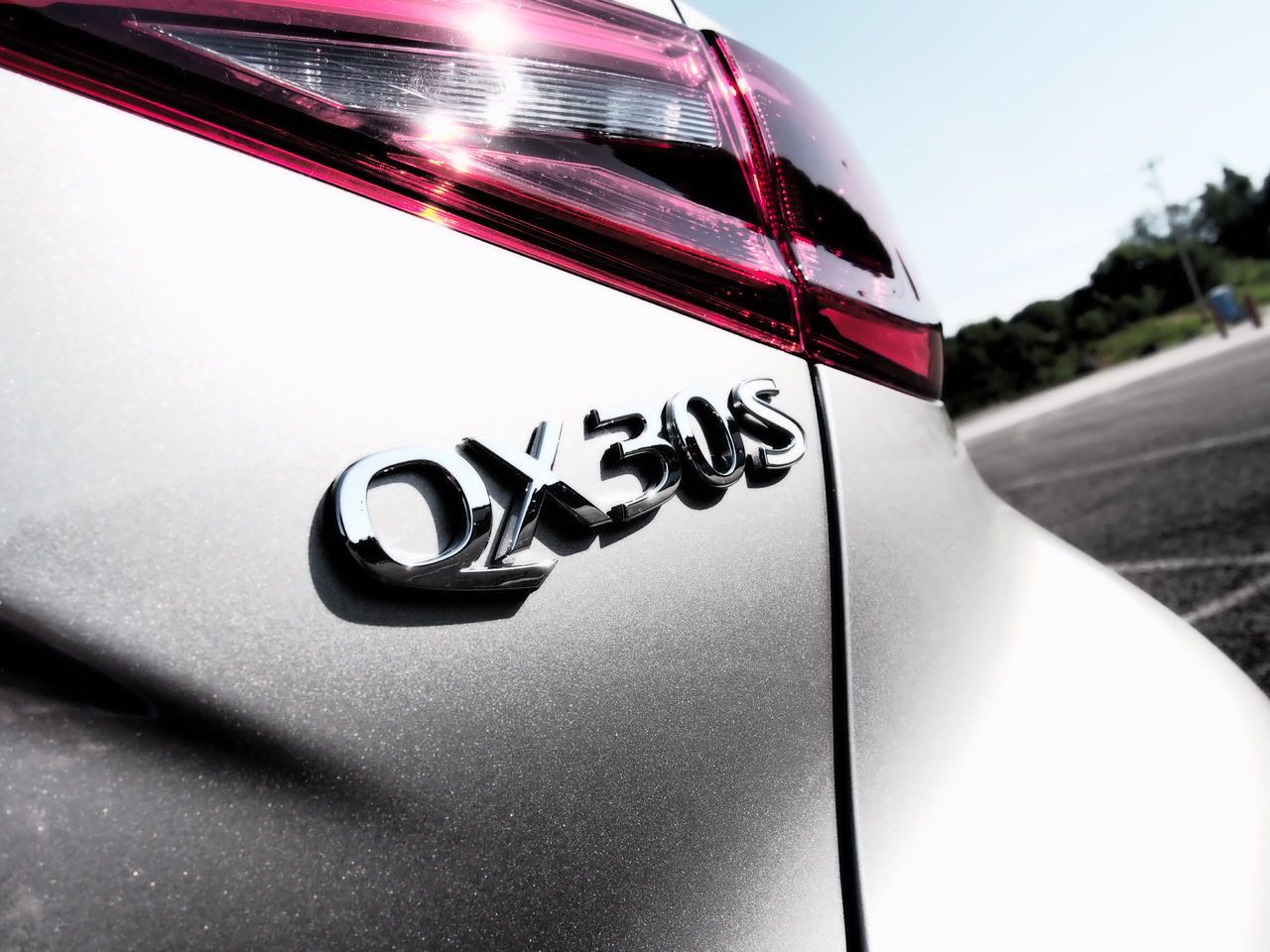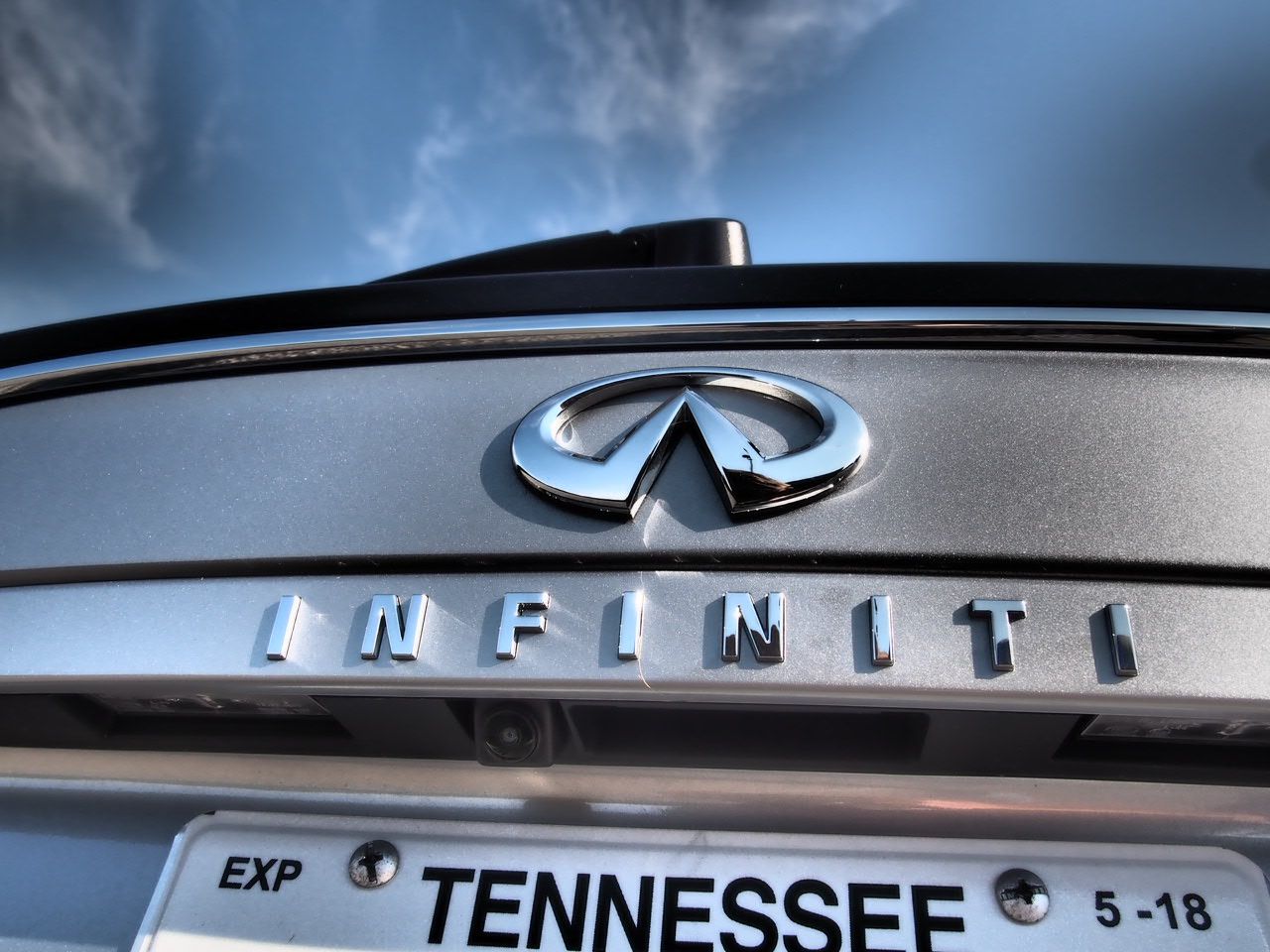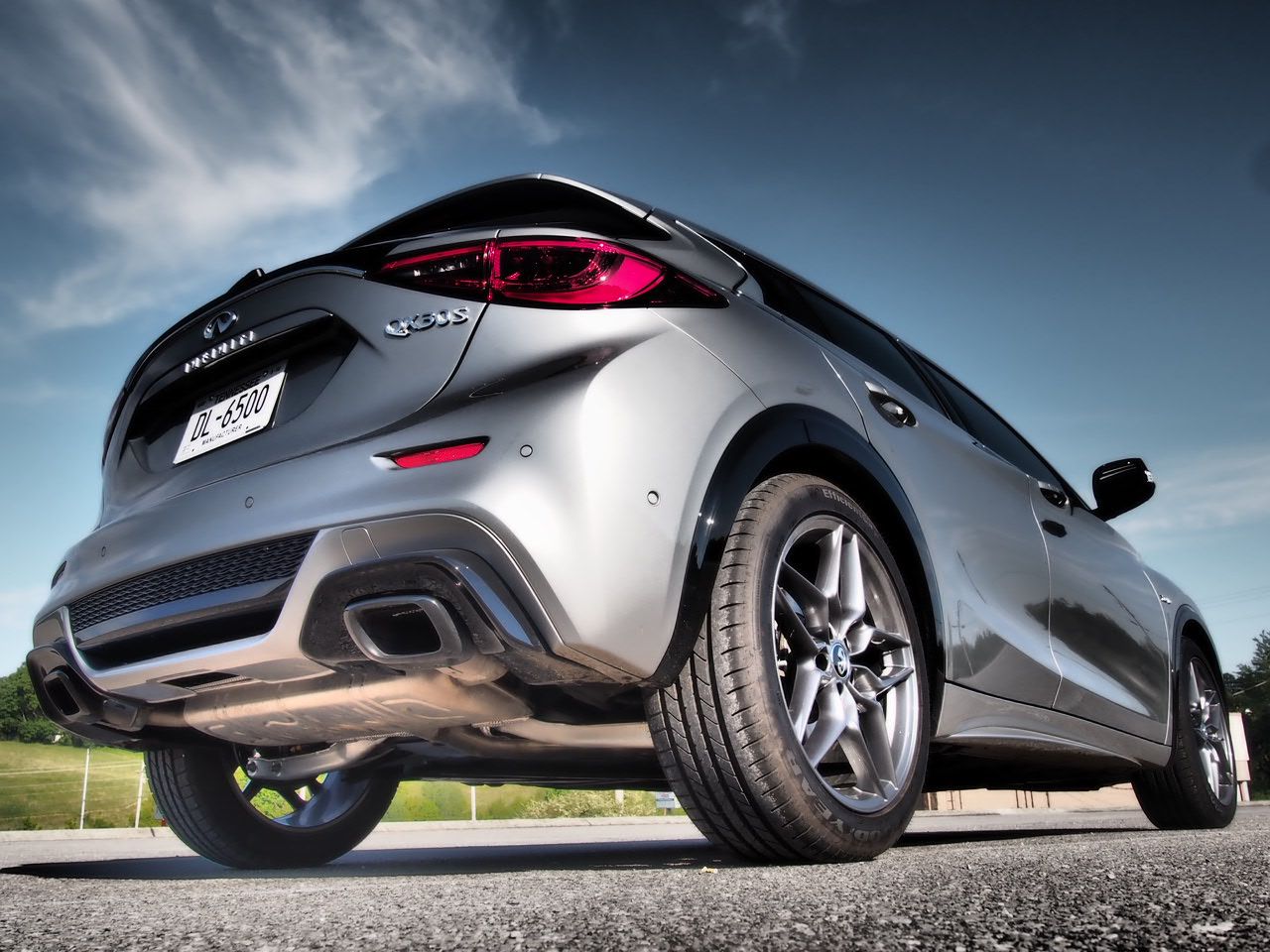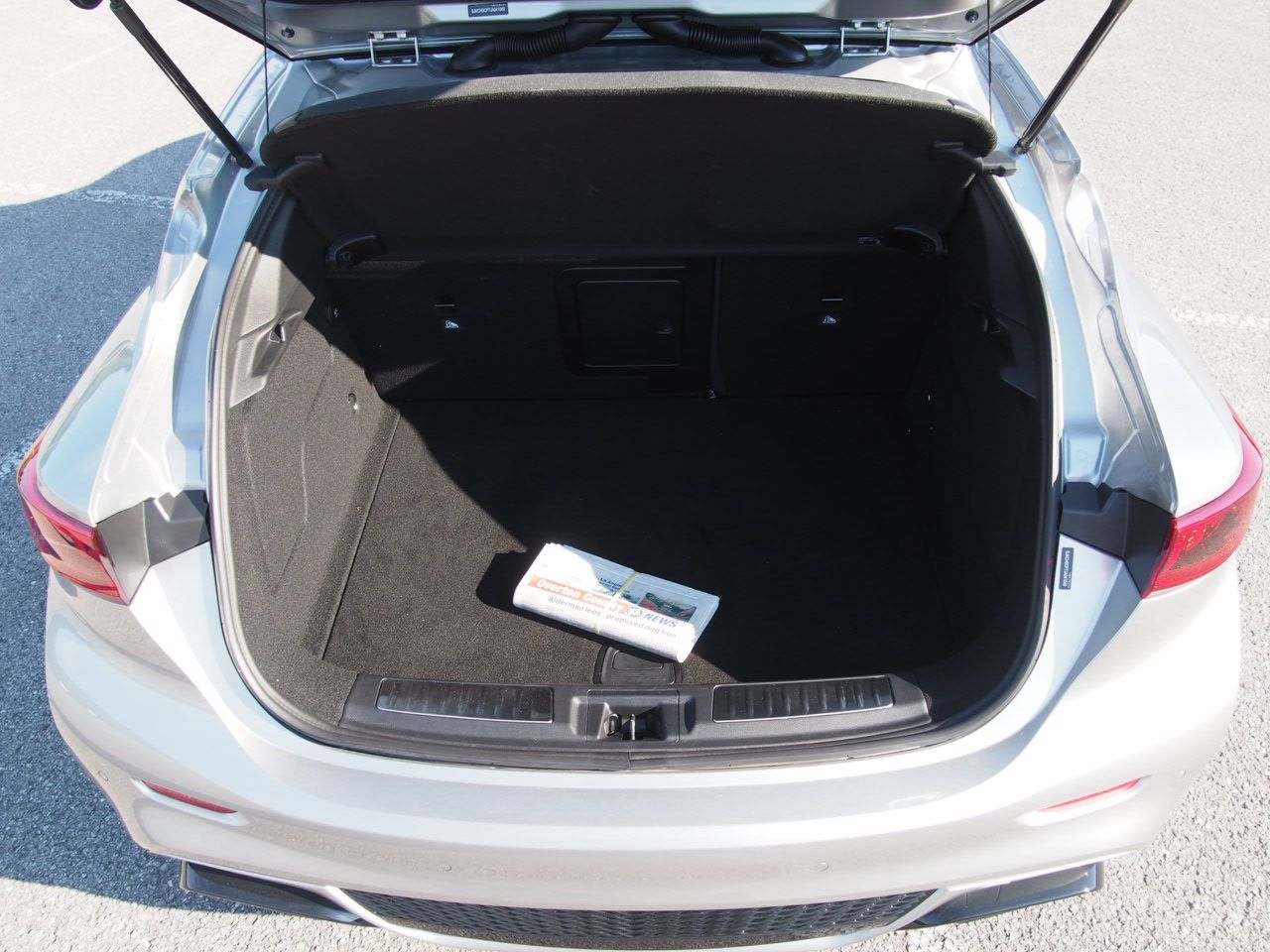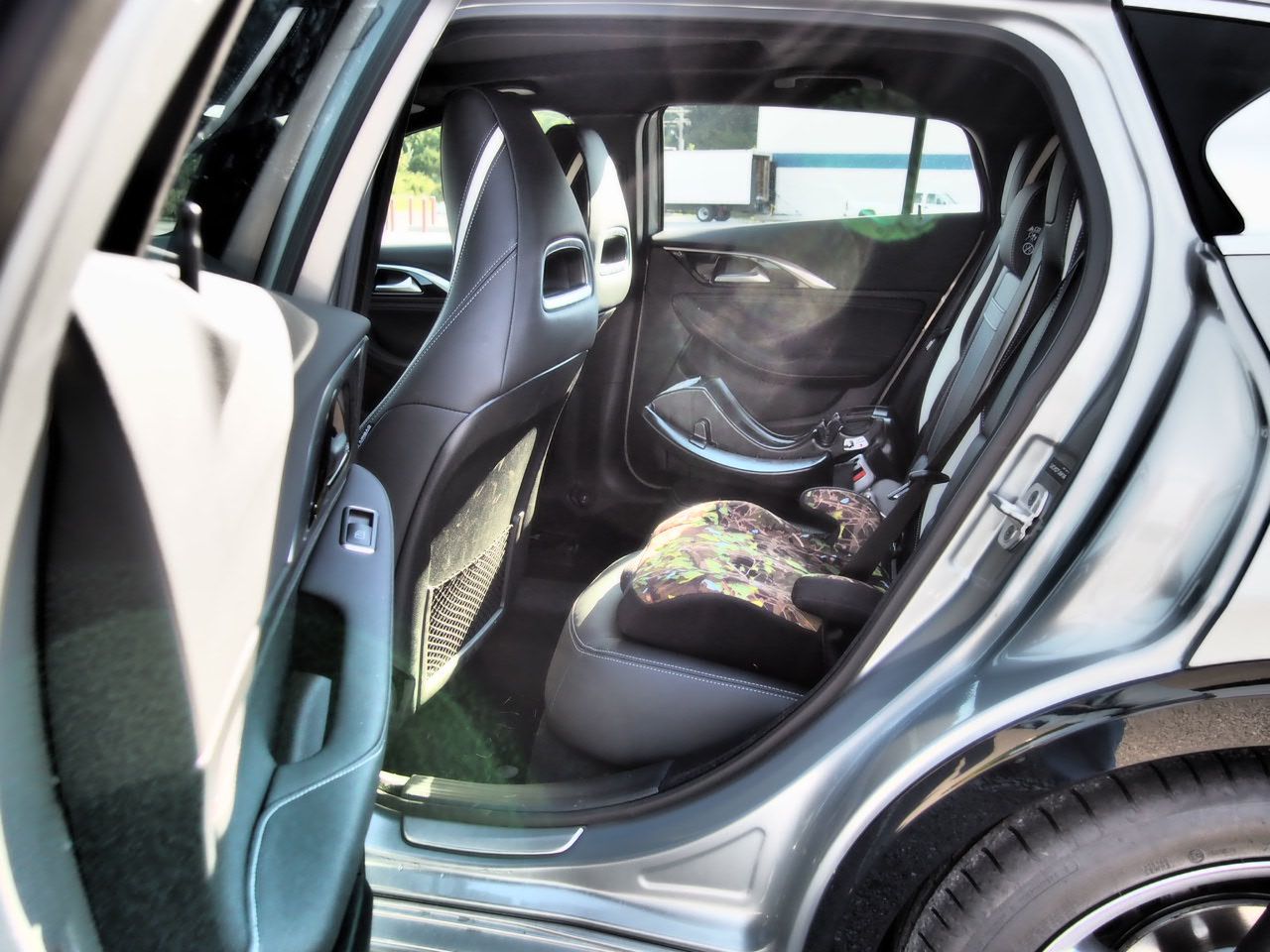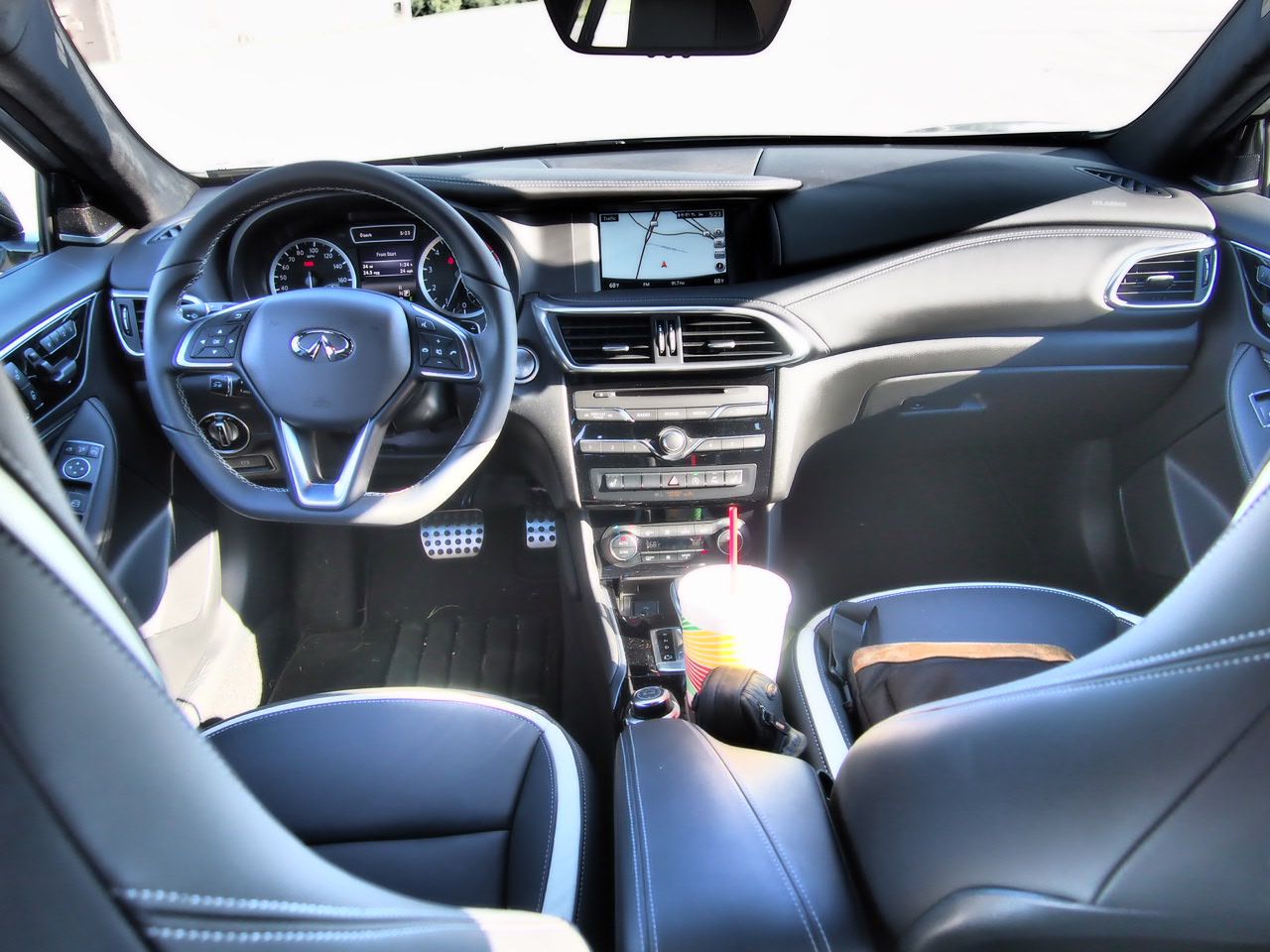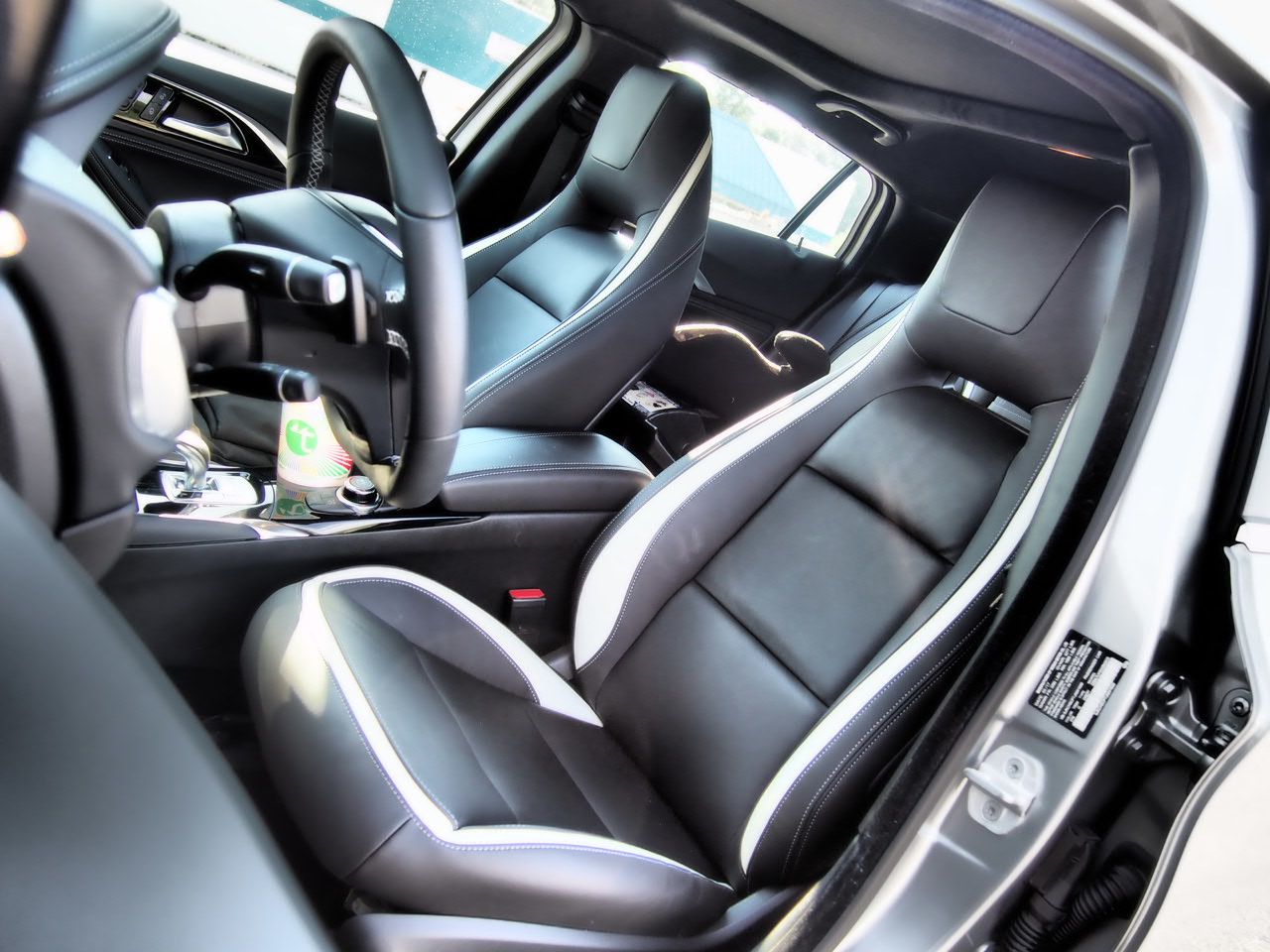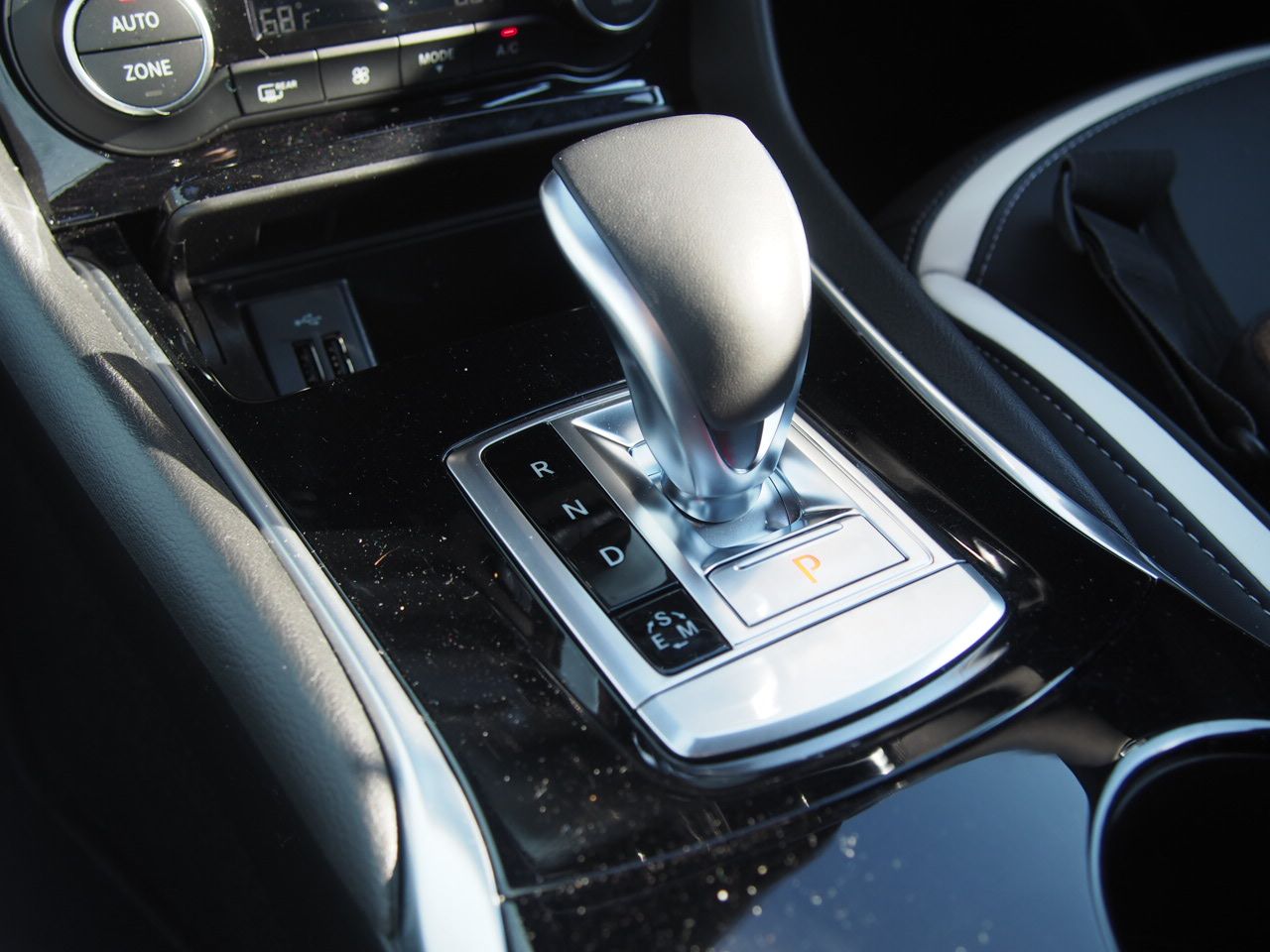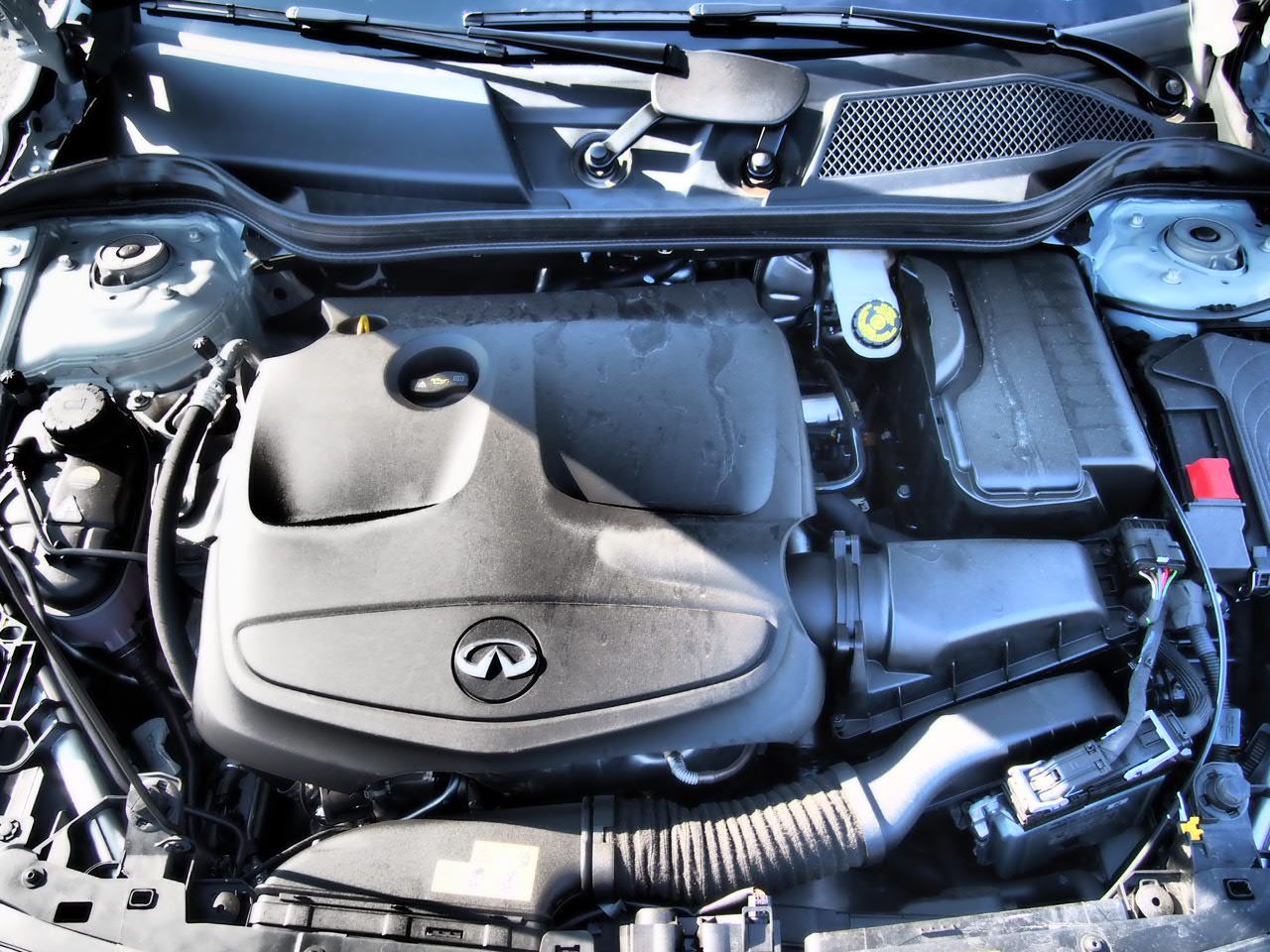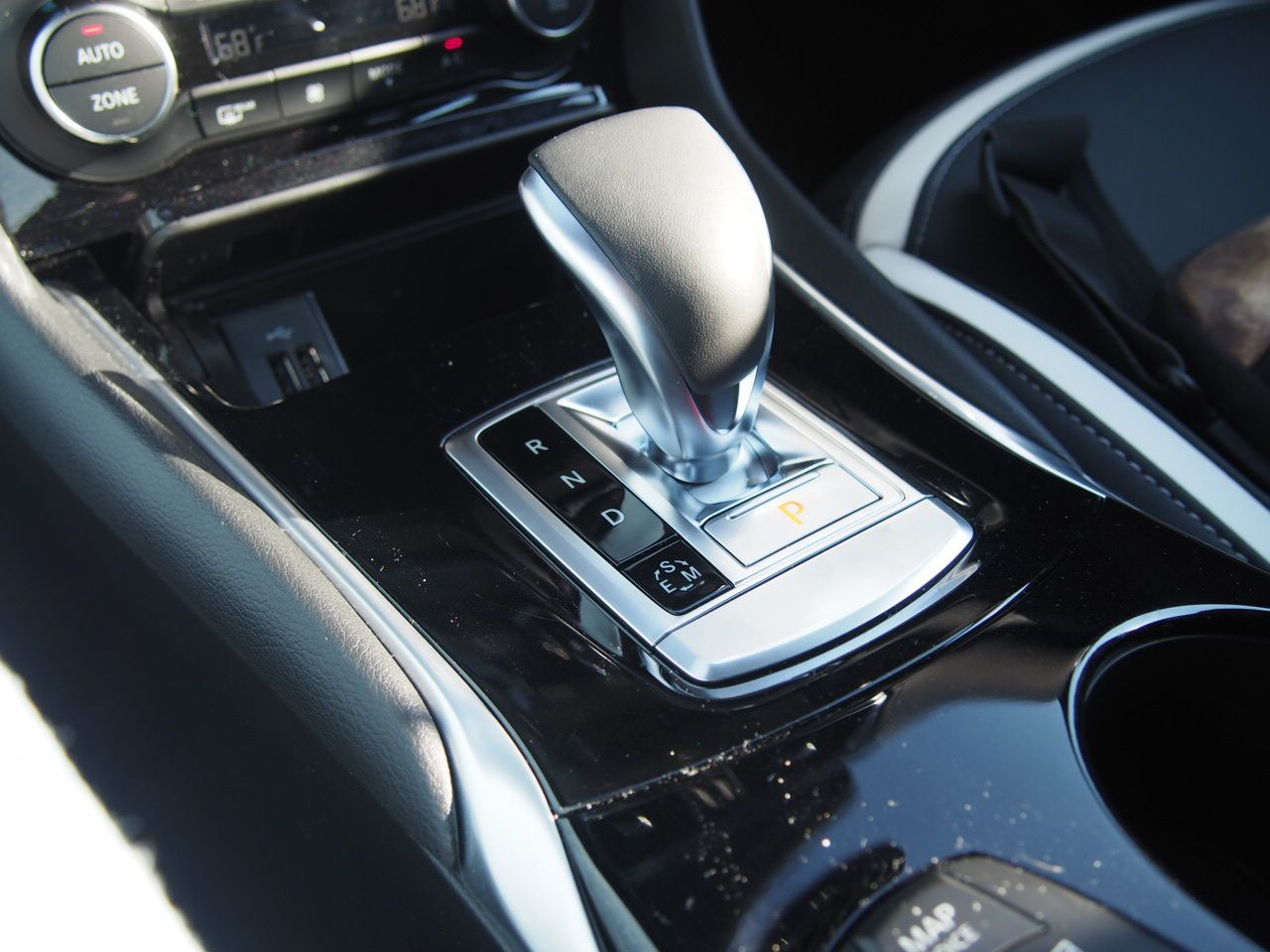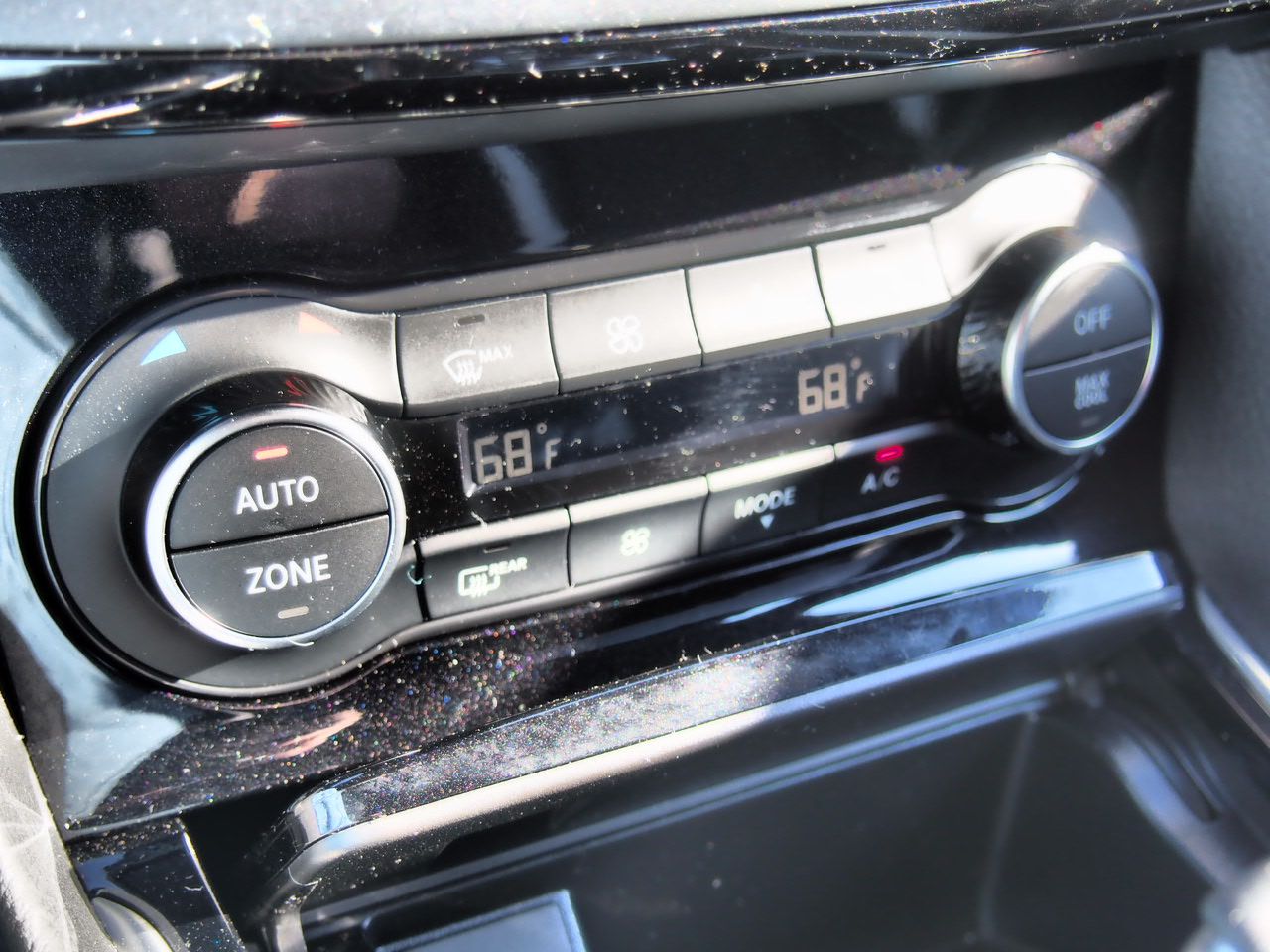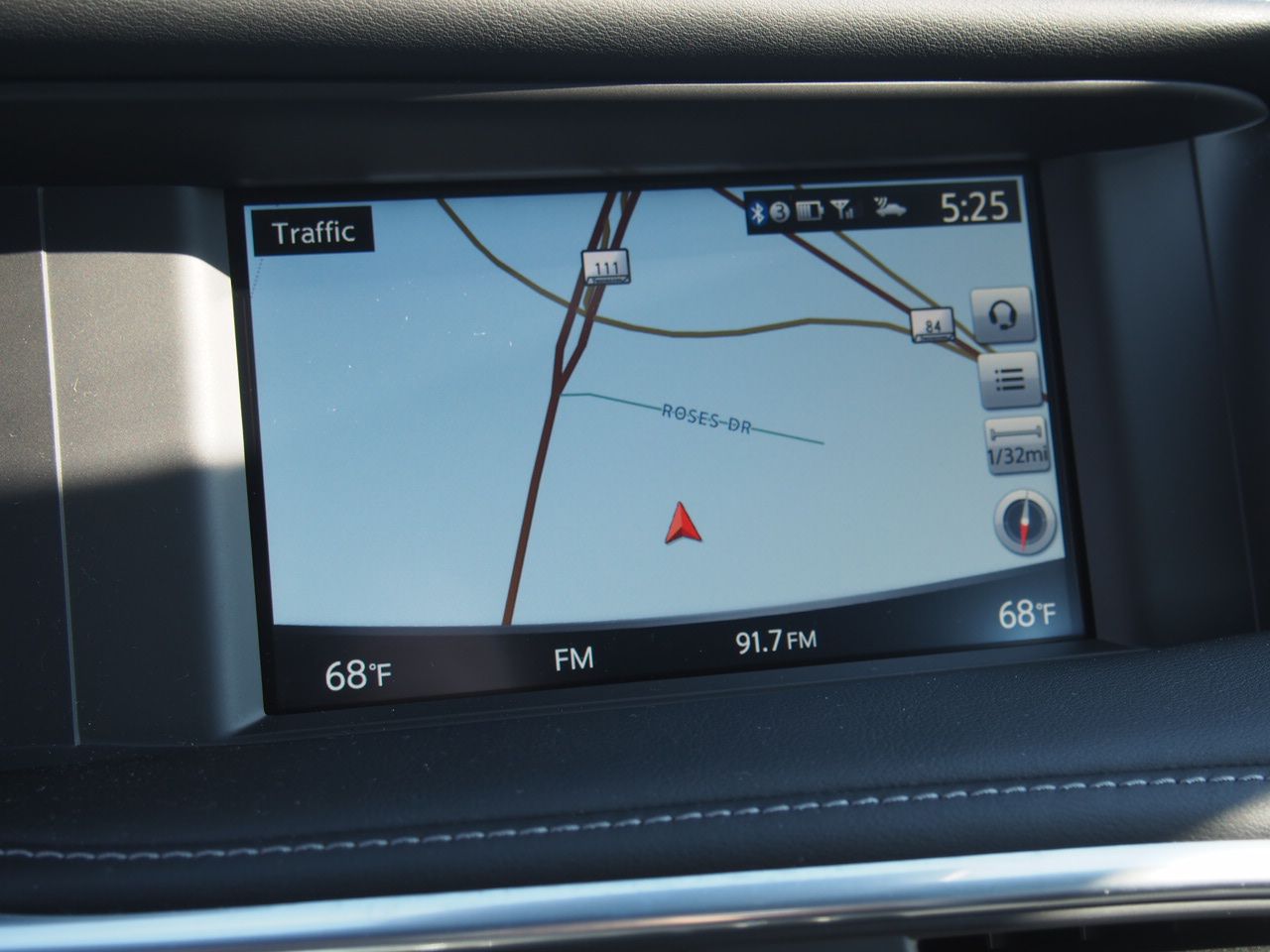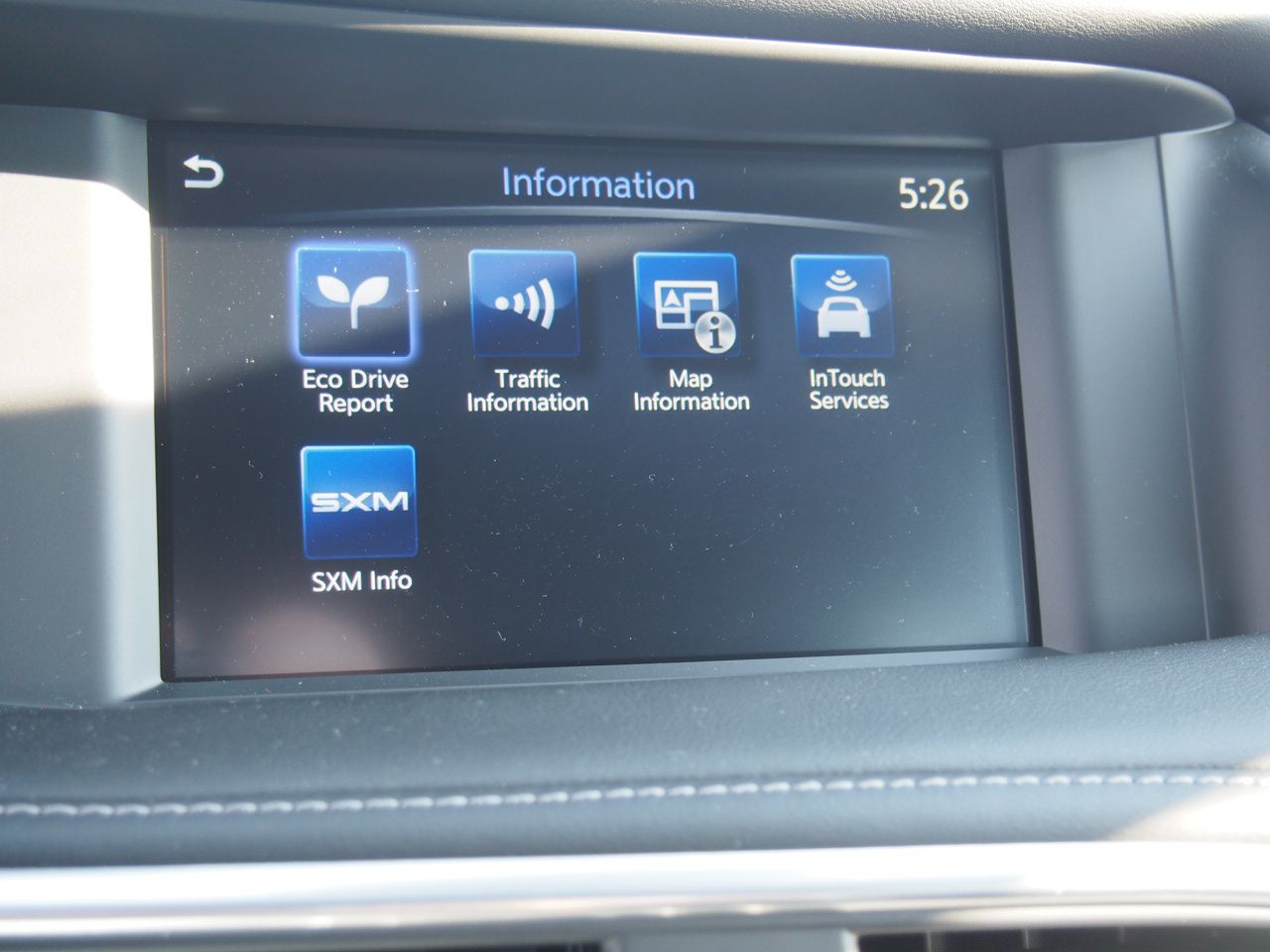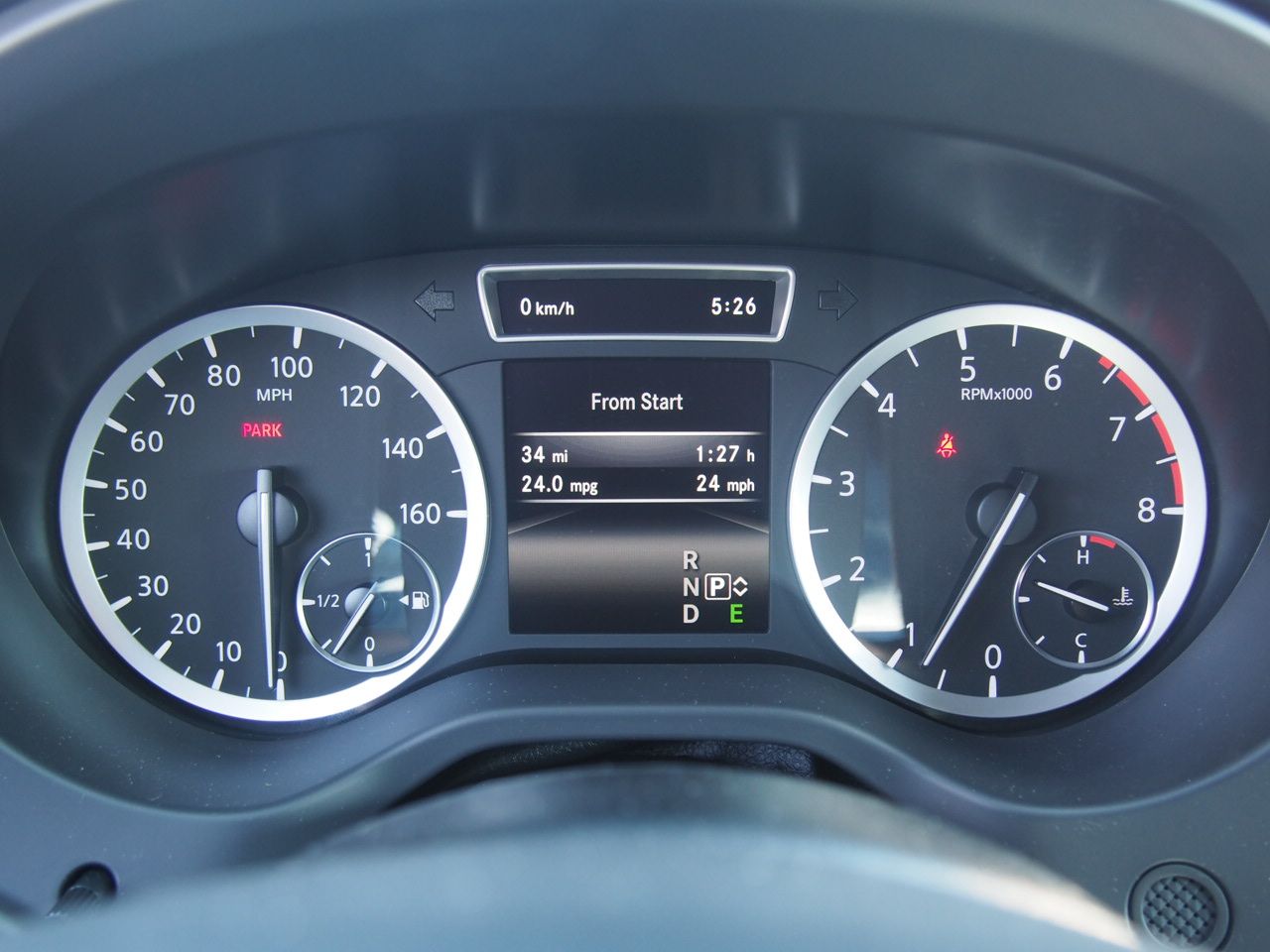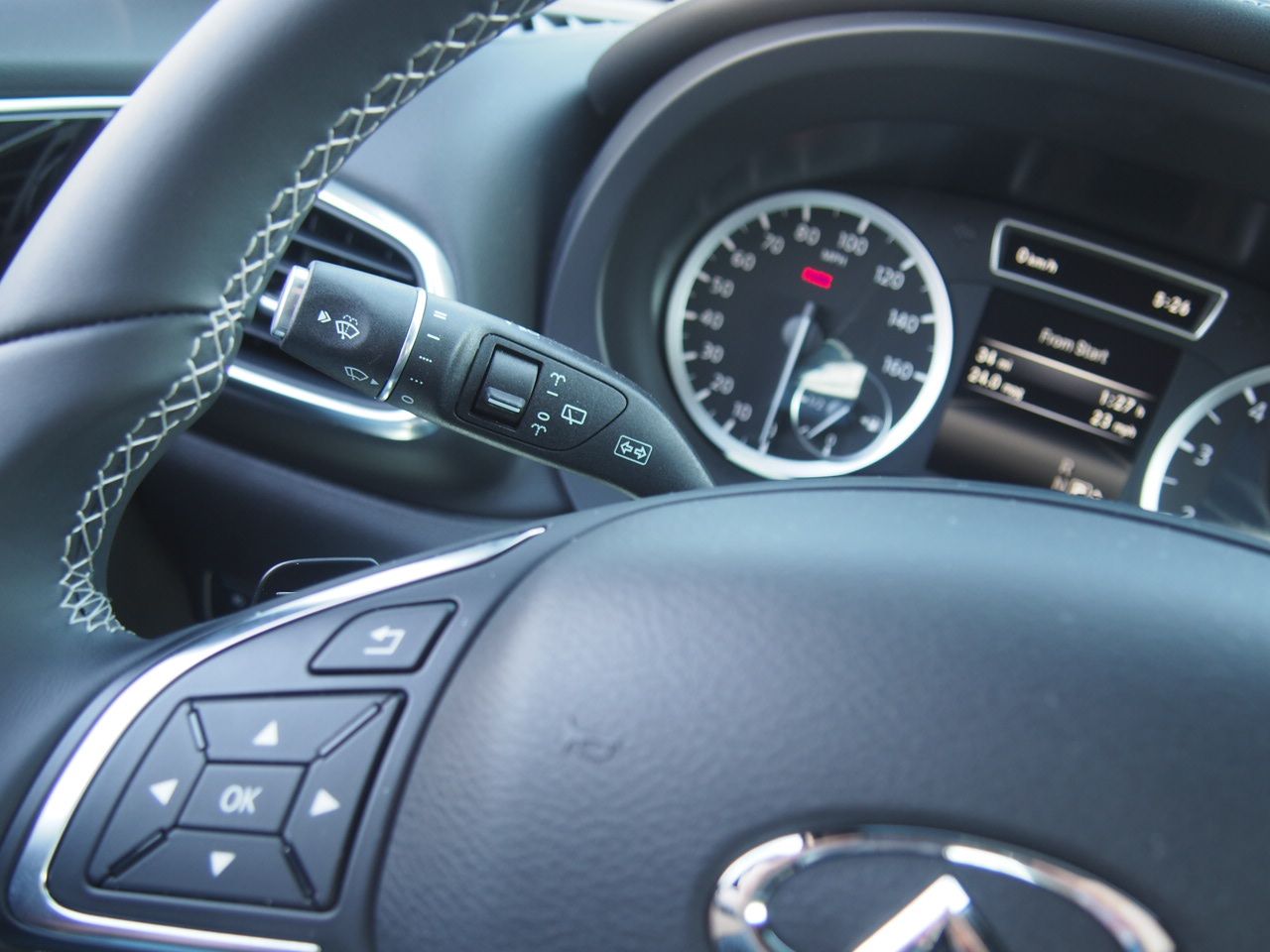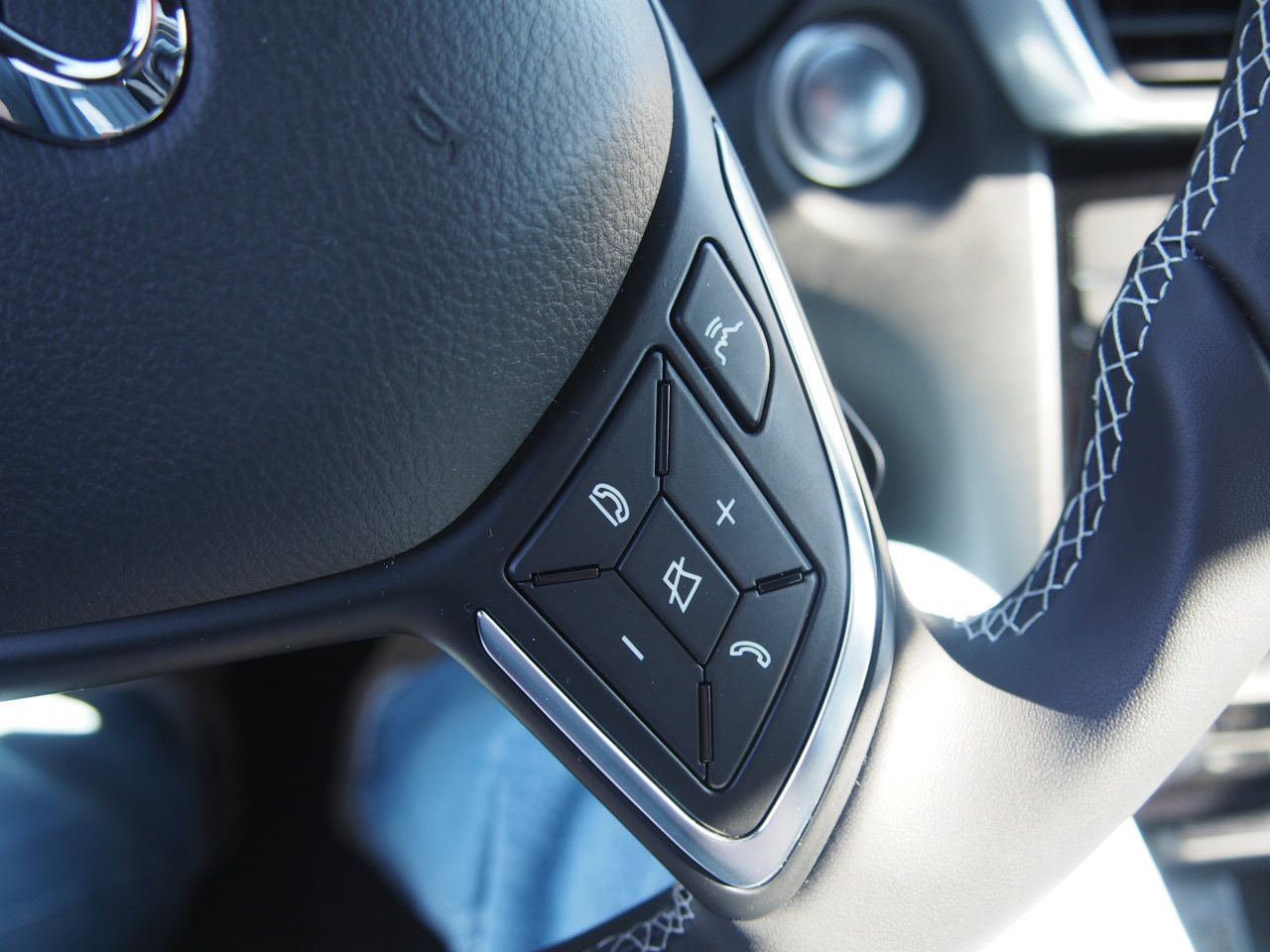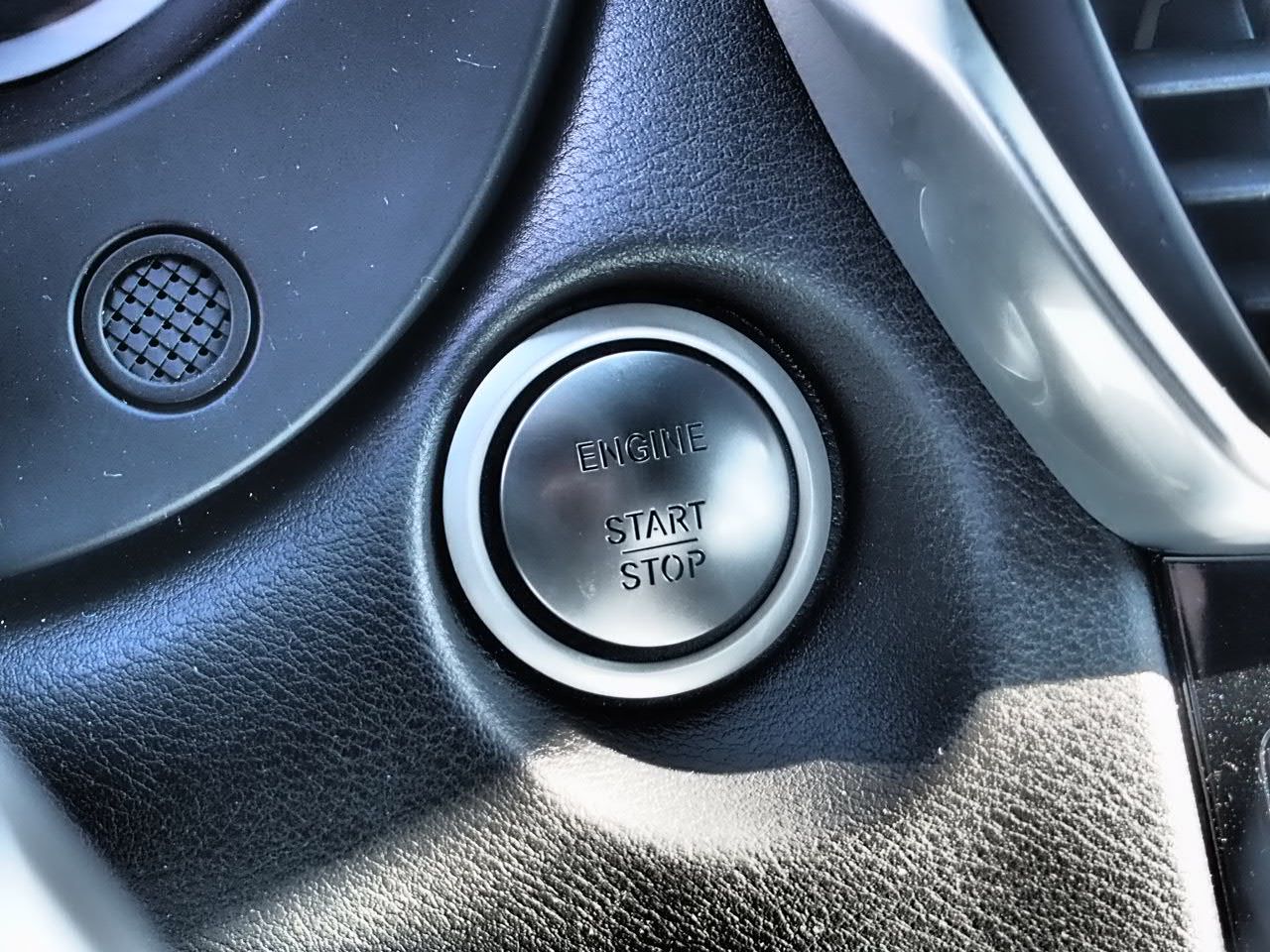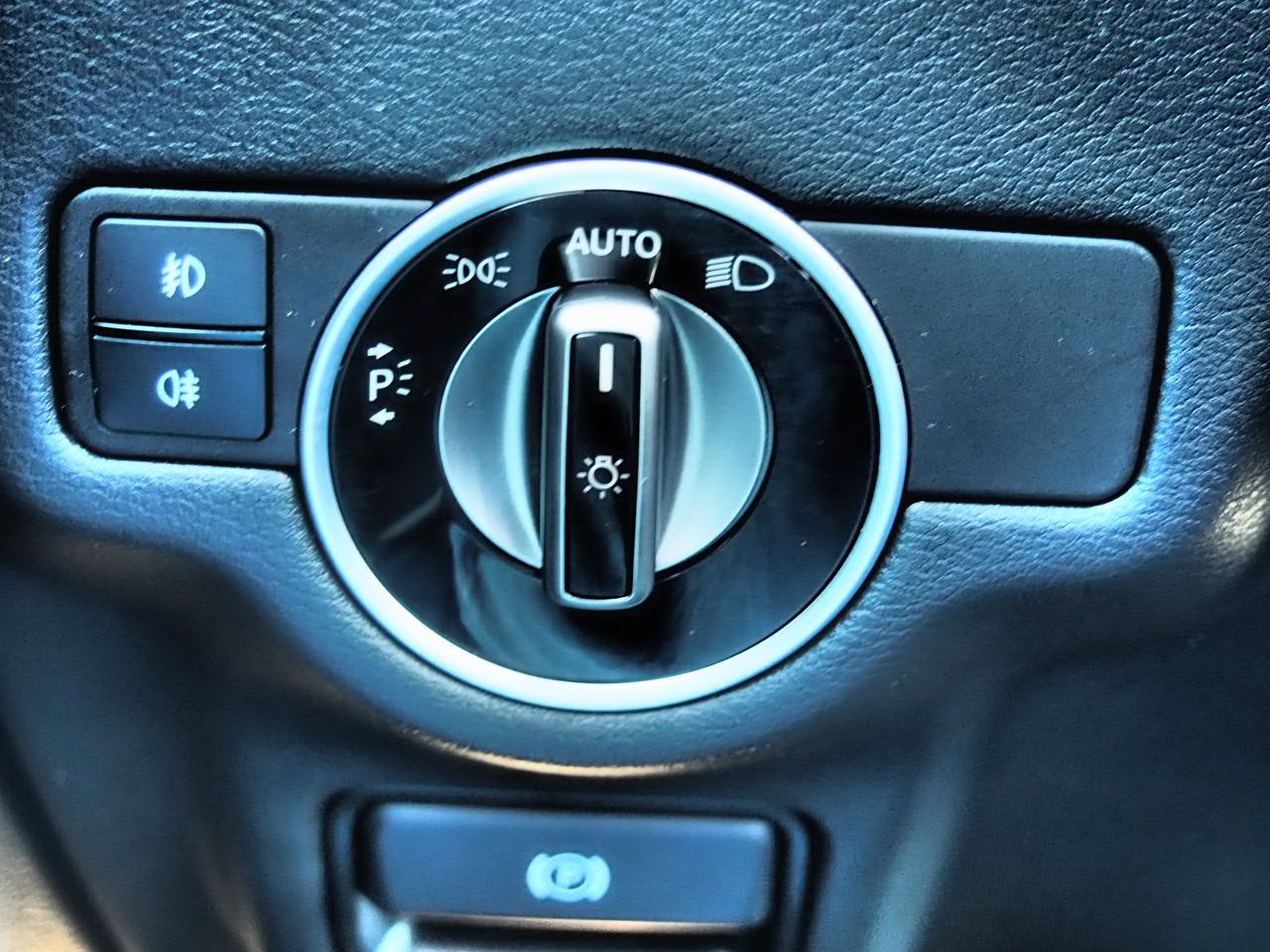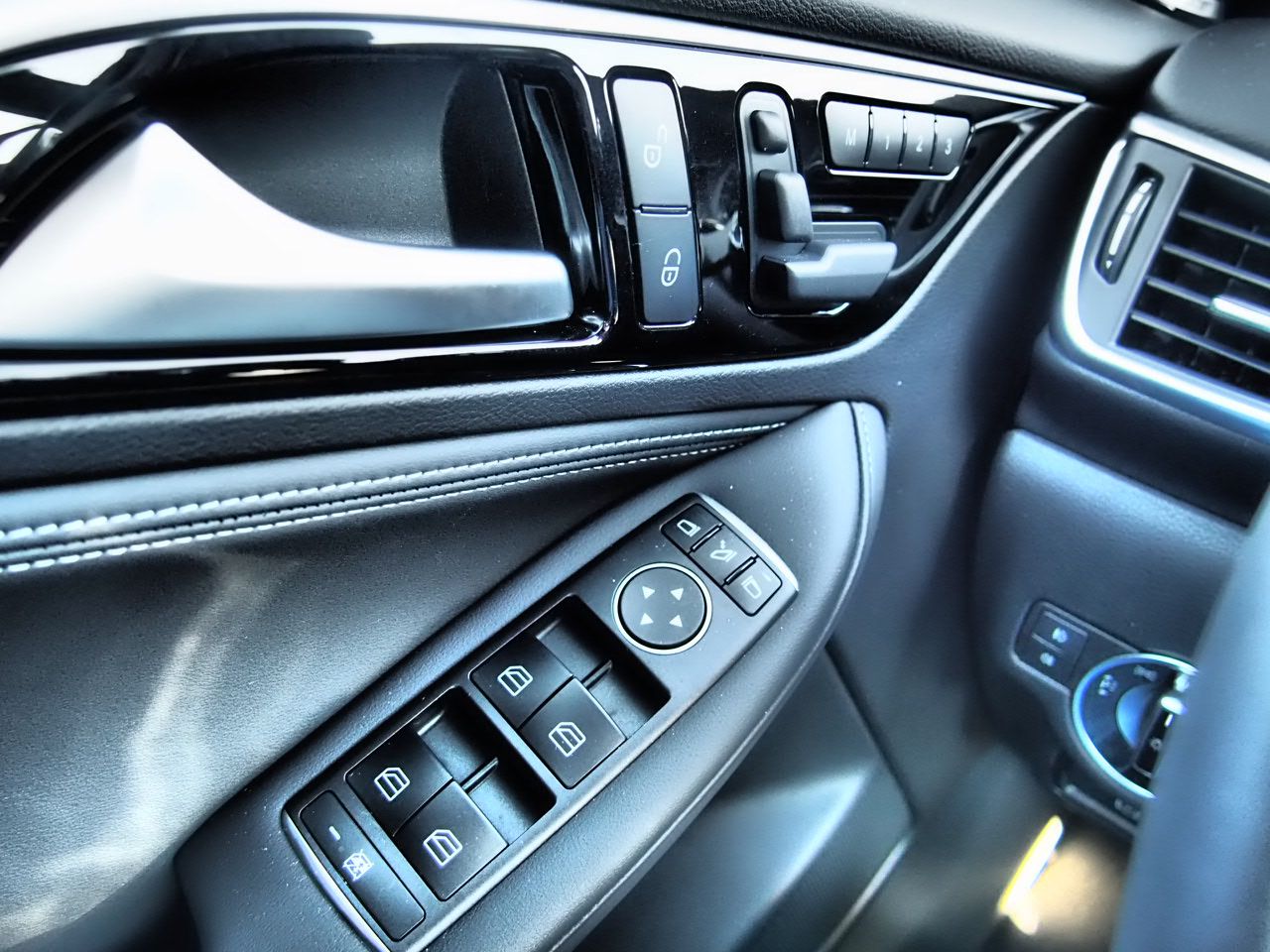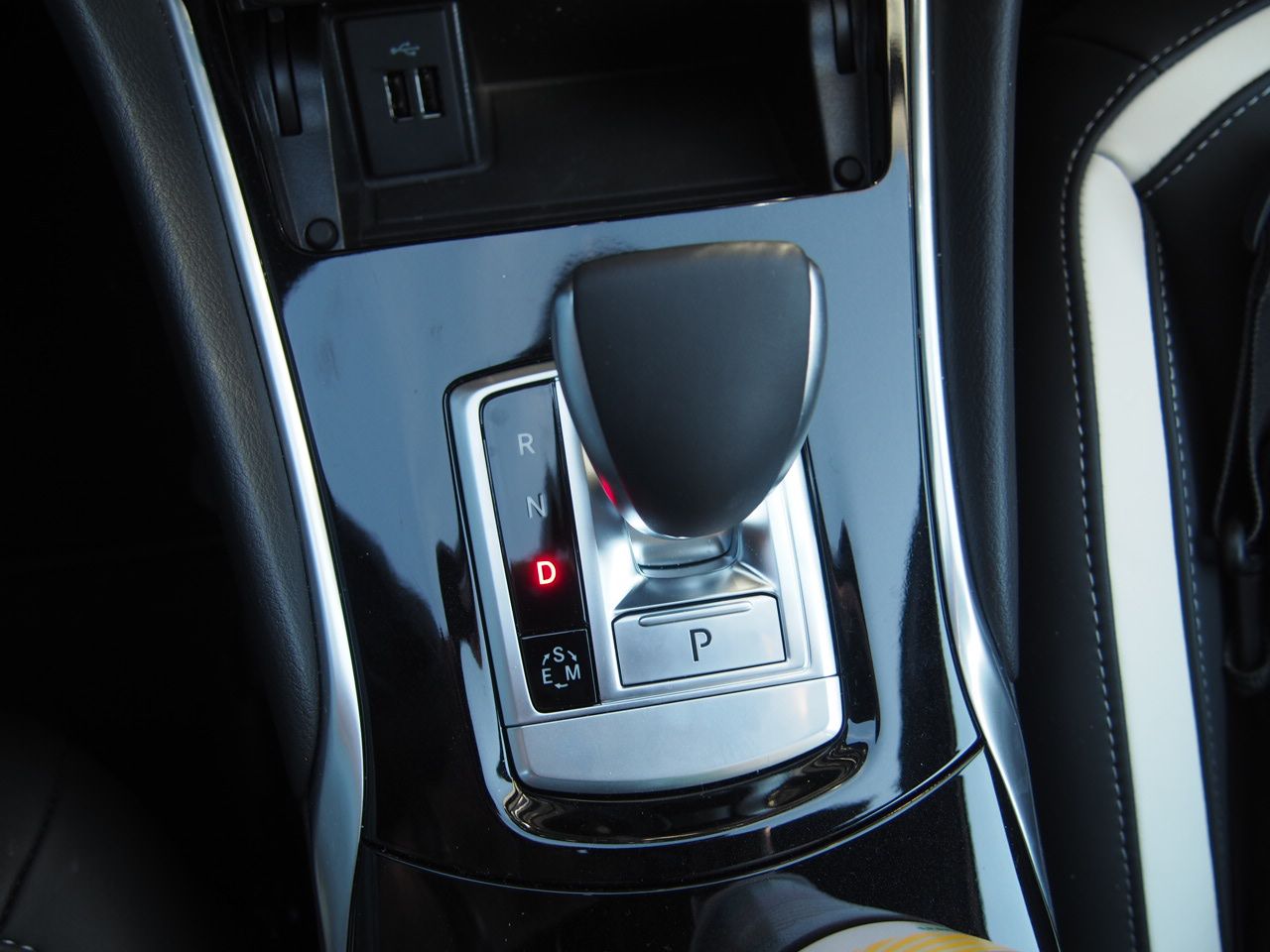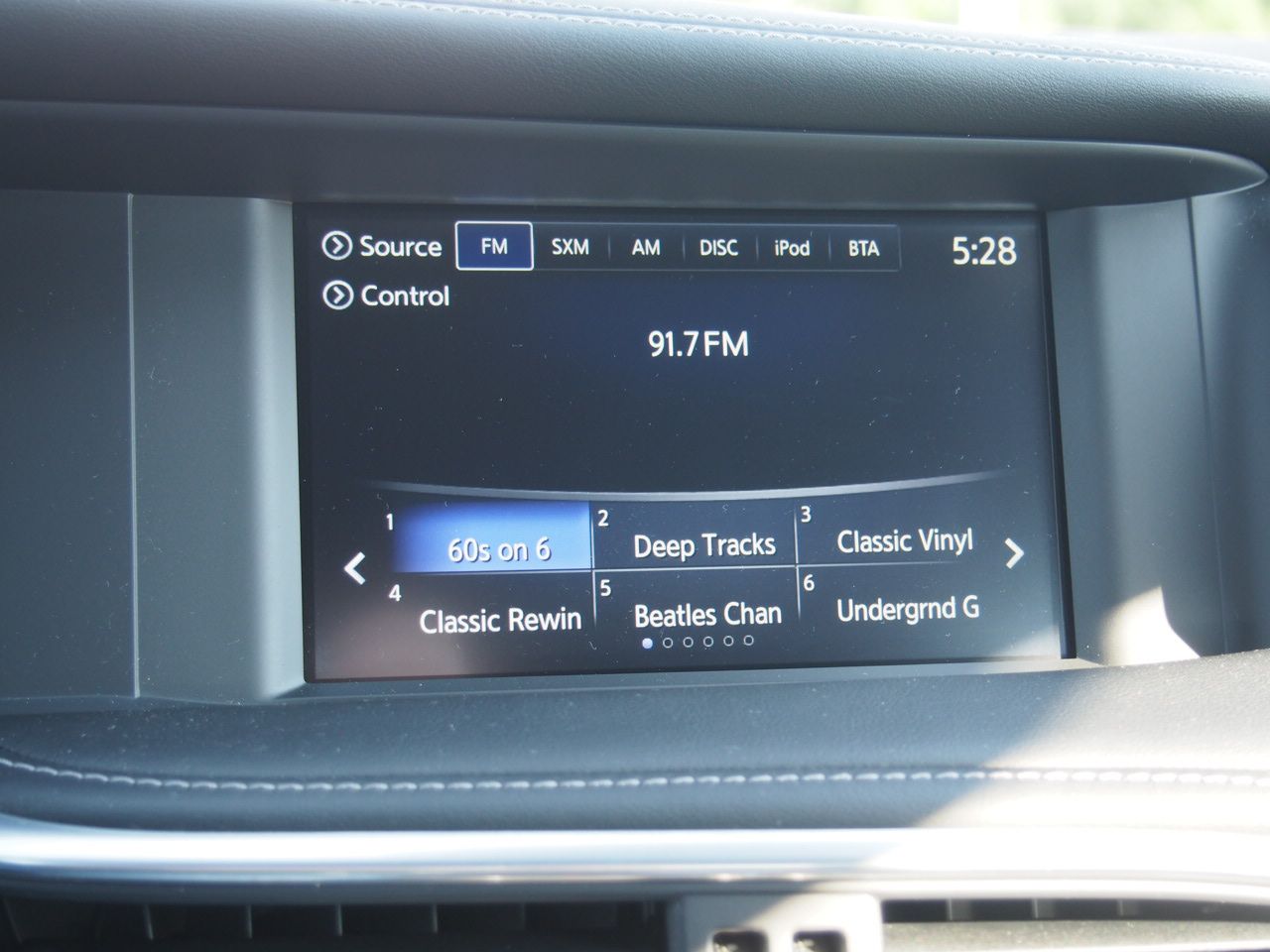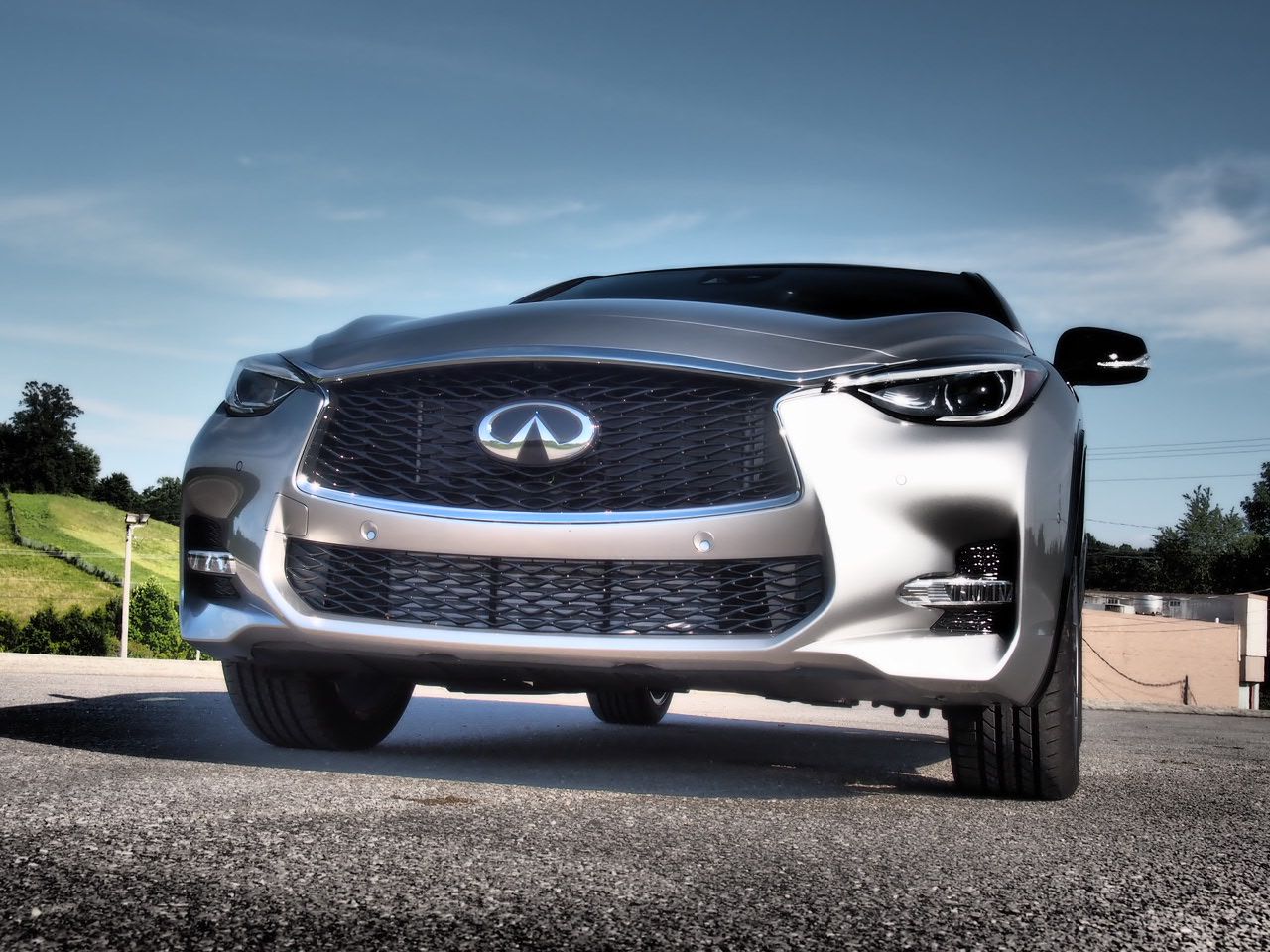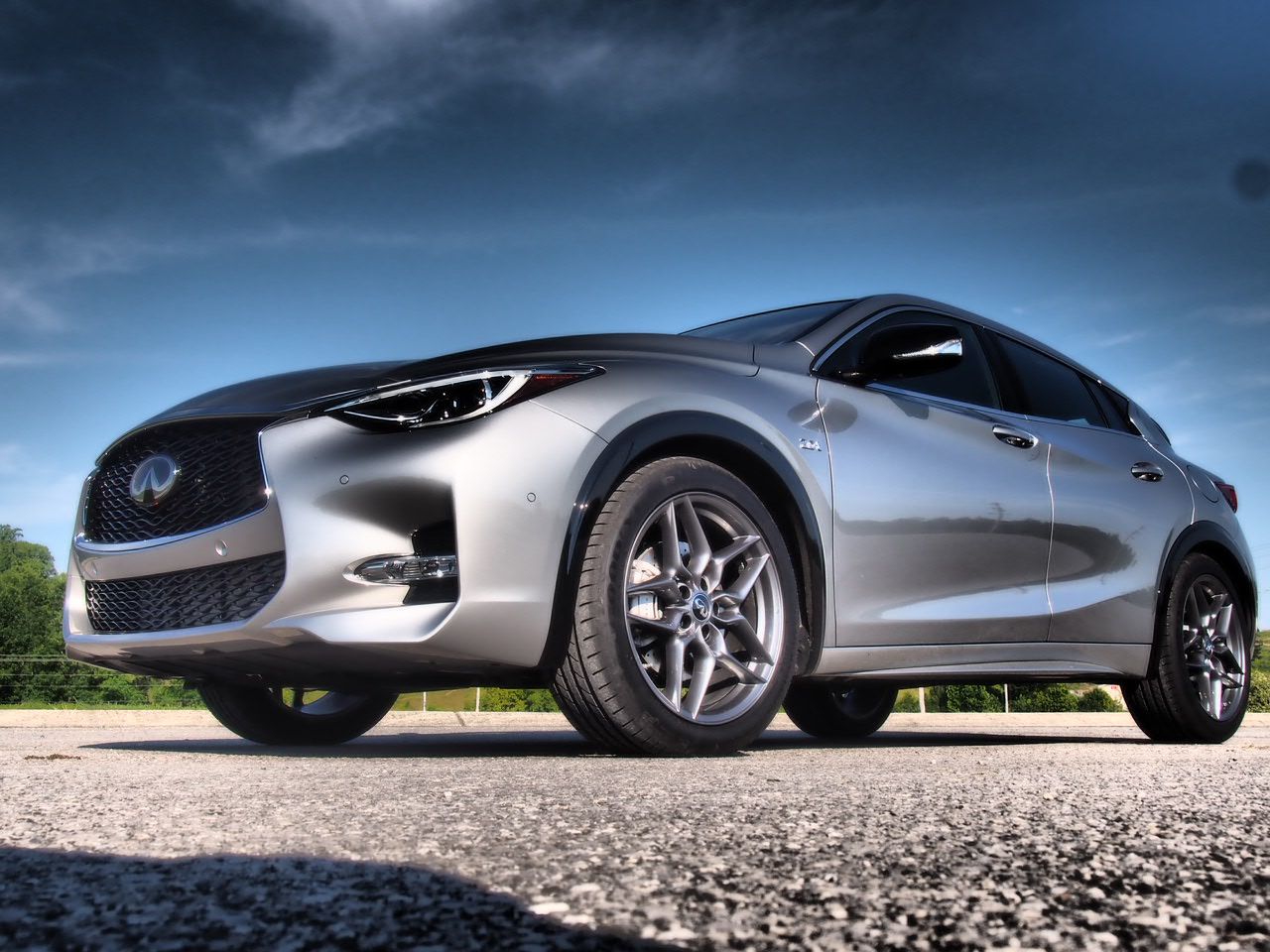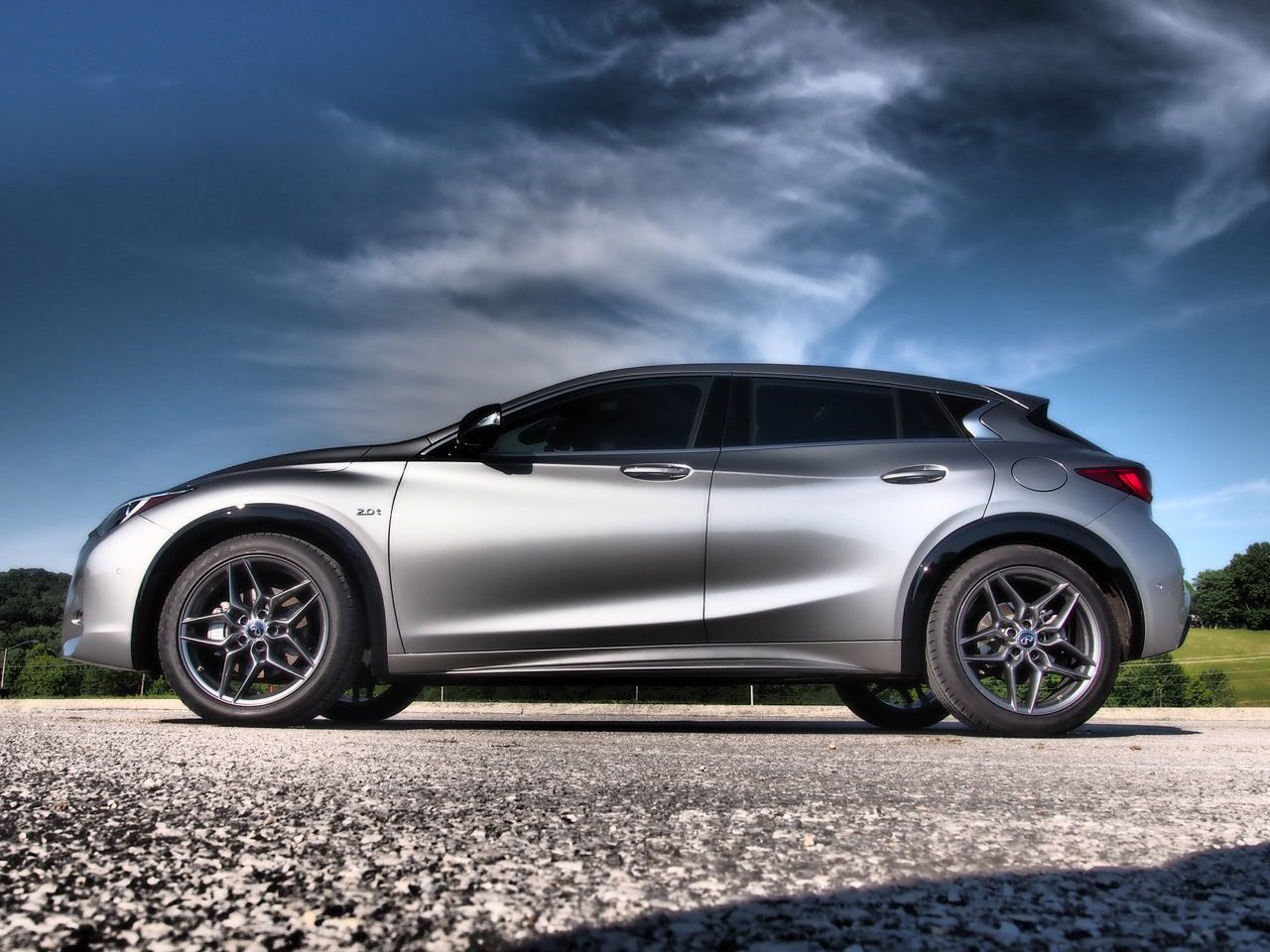Infiniti makes a lot of fun cars and SUVs. But the QX30 may be the best offering in the range on a fun-per-dollar basis -- particularly the 2018 QX30 Sport.
Sharing a lot in common with the Mercedes-Benz GLA Class, the smallest Infiniti crossover is eager to clip apexes on your favorite twisty road. Yet it remains practical enough for a small family to use as a daily driver, and cheap enough to make it attractive to people who might not be luxury-brand regulars.
2018 Infiniti QX30 Sport
- Make: Array
- Model: 2018 Infiniti QX30 Sport
- Engine/Motor: inline-4
- Horsepower: 208 @ 5500
- Torque: 258 @ 1200
- Transmission: seven-speed dual-clutch
- [do not use] Vehicle Model: Array
Design Notes
Infiniti’s design team deserves applause.
The QX30 is a striking, swoopy masterpiece that looks like it’s going fast when it’s sitting still.
The front of the QX30 uses Infiniti’s corporate nose to good effect, setting the tone for the rest of the design. The secondary grille low on the fascia almost gives its face a mischievous grin. Narrow headlight lenses can house LEDs instead of traditional bulbs. The hood is relatively low and long, for a front-wheel drive-based crossover. Along with the steeply raked windshield, it adds to the sporty look of the QX30.
From the side view, that windshield rake becomes more apparent. So does the QX30’s muscular body sculpting, including front fender bulges and a chiseled crease that flows from the hood down through both door handles. An upward crease at the bottom of the design adds visual strength while speaking to the QX30’s sporting intentions. The QX30 Sport model adds lower body-side cladding that further accentuates this design, along with 19-inch blacked-out alloy wheels. Infiniti’s trademark crescent-moon chrome trim is present at the rearmost part of the side windows. It’s a nice design signature, similar in purpose to BMW’s famed Hofmeister Kink.
From the rear, the QX30 sits low and would almost pass for a regular hatchback model if not for the extra inch or two of ride height. The hatch glass slopes steeply from the C pillar down to the metal structure of the tailgate. The rear design is an interesting mix of elements -- glass, glossy black trim, and painted metal and plastic with a harmonious array of creases and indentations. Twin exhaust outlets -- painted glossy black on the QX30 Sport -- tie it all together.
Inside, the QX30 Sport has two-tone leather seating surfaces -- black with white accents. It works well. The front buckets are a faux race car design, with an immovable headrest and a cutout at shoulder-level that evokes a five-point harness setup. The cockpit design is as modern and swoopy as the exterior body panels. The center stack is topped by a seven-inch display. There’s a pair of air vents below it, followed by a CD slot (!), multimedia control buttons and volume knob, seat heat and HVAC controls, and a storage cubby ahead of the joystick-style shift lever.
Drive Notes
Propelling all Infiniti QX30s is a 2.0-liter turbocharged four-cylinder engine co-developed with Mercedes-Benz.
Making 208 horsepower at 5,500 RPM and 258 lb-feet of torque between 1,200 and 4,400 RPM, the QX30 Sport’s engine provided a good mix of fun and frugality. While I found it a bit raspy when revved, the QX30’s seven-speed dual-clutch automated manual transmission and the engine’s wide, flat torque curve made that kind of revving largely unnecessary in normal driving.
Steering feel in the QX30 Sport is better than some vehicles costing twice as much. Driving the QX30 Sport weeks after driving an Infiniti Q70L, the QX30 had a tighter steering feel compared to the Q70, which had good feedback but an almost hollow feeling transmitted through the steering column. Perhaps it’s a matter of Mercedes chassis engineering.
Handling is a strong point for the QX30 Sport, with a MacPherson suspension up front that includes a stabilizer bar and a multilink rear independent suspension setup. On a twisty road, the QX30 handles superbly. For the Sport trim, Infiniti lowers and stiffens the suspension a bit compared to other QX30s. This results in a slightly rougher experience over potholes and expansion joints, but the payback is a stiffer chassis on your favorite curve-filled backroad. In addition, the Sport gets cross-drilled ventilated front disc brakes to help the brakes perform stronger than standard QX30 models.
Like a great many sporty luxury entries of all sizes, the QX30 Sport allowed quite a bit of road noise into the cabin. That was the only consistent disappointment in the QX30 Sport. Thankfully, the Sport’s standard Bose 10-speaker audio system is more than capable of drowning out the din.
Also, I was thankful for the Mercedes-Benz infotainment system in the QX30. It mostly addressed my frequent criticism of Infiniti models: I usually find their infotainment experience dated or in some other ways, not ideal. The last Q70 I drove was utilizing an infotainment interface that seemed very outdated. Meanwhile, the twin-screen setup in the Q50 and Q60 seems more modern, but is not without its shortcomings.
The QX30 had an infotainment system that was an interesting mix of Infiniti touches and other things you might find in many newer Mercedes models, including its sister, the GLA Class. That was a good thing. It was easy to navigate the menu structure using the console-mounted control dial.
There were other Mercedes-Benz Easter eggs hidden in the mannerisms of the car. The “Don’t Forget Your Key” and “Buckle Your Seat Belt” chimes -- very identifiable “bong” sounds -- were just like every Mercedes I have driven in the past. The gauge cluster had a central information screen for things like fuel economy and tire pressure, and that screen’s graphics were exactly like most modern-day Mercedes-Benzes, with the exception of the miniature QX30 shown in some graphics.
Interior space was a little tight for my family of four. Making room for a rear-facing baby seat required my front-seat passenger to ride with her knees nearly touching the glovebox door. Infiniti’s specs say there’s just 33.5 inches of rear-seat legroom and 37.5 inches of rear headroom, so taller passengers will not like riding back there for more than a jaunt across town.
The dimensions are more friendly for front-seat occupants, with 41.3 inches of legroom and 38.4 inches of headroom. Cargo capacity comes in at 19.2 cubic feet with the rear seats upright, which isn’t bad in a world of 15-cubic-foot sedan trunks, but I found it difficult to stack our groceries back there -- perhaps because of the cargo cover remaining in place. Fold the rear seats and things get easier, with 34 cubic feet of space.
Competitors
Mercedes-Benz GLA Class
It’s impossible to talk about the QX30’s competition without mentioning its German sister, the Mercedes-Benz GLA Class.
While styling is subjective, I find Infiniti’s sheet metal more attractive than the slightly dowdy GLA. The interior experience, as noted above, remains mostly the same in either model, however. So if you like the exterior design of the Merc better than the Infiniti, you won’t have to give up any of the interior niceties noted above.
The big advantage for Mercedes-Benz: Tuning. Any GLA will handle just a little bit better than the Infiniti-tuned QX30. The Germans engineered the platform both vehicles are built on, so they seem to get the most out of it with regard to ride and handling. Also, those who want a high-performance small SUV can get an AMG version of the GLA that cranks out a healthy 375 horsepower from a hand-built 2.0-liter four-cylinder turbocharged gasoline engine. It’s the same engine I have experienced in the Mercedes-AMG CLA 45 sedan, and it is a riot to drive.
Otherwise, I think Infiniti has a better value proposition. It gives up nothing in terms of its handsome looks or its interior luxury to the Mercedes GLA Class, yet it’s cheaper to buy. Starting price of the QX30 is $29,950, and my QX30 Sport tester had a starting price of $38,500. An equivalent comparison of Mercedes-Benz GLA 250s would see a base price of $33,400 and a well-equipped price north of $40,000. On top of that, Infiniti dealerships tend to be more aggressive with discounts than Mercedes-Benz dealerships.
Read our full review on the 2018 Mercedes-Benz GLA Class.
MINI Cooper Countryman
While it doesn’t have the sporty looks of the QX30, the MINI Cooper Countryman is worth comparing to the low-slung Infiniti. Upright stance notwithstanding, the Countryman has plenty of powertrain and chassis chops when equipped in Cooper S trim, allowing it to hang with the Infiniti on your favorite section of highway.
I give the Countryman the edge in several categories: Its ride is more forgiving on rough roads. Its interior is more practical for a small family thanks to its boxy shape. That shape also makes for big window openings, giving occupants great outward visibility from any seat. The MINI has a wider range of powertrain options (three-cylinder or four-cylinder turbocharged gasoline engines, or a plug-in hybrid that can go about 12 to 15 miles on batteries alone before using any gasoline.) Customization options abound, including an optional manual transmission, as befits MINI’s modus operandi.
Those looking for a deal will still probably be more attracted to the Infiniti QX30, however. The Countryman ain’t cheap. You’ll be hard-pressed to find one for less than $30,000 at your local MINI dealer, and most will creep closer to $40,000 with a few preferred options installed.
Outside and in, the MINI Countryman and the Infiniti QX30 are two very different vehicles aiming at the same type of buyer: someone who values a small vehicle footprint, a sporty driving experience, and a luxurious interior.
Read our full review on the 2017 MINI Cooper Countryman.
Lexus NX200t
Infiniti’s old rival Lexus has a compelling entry in this class for those who place comfort and reliability above all other considerations. The NX200t is arguably attractive -- some like its design, some don’t -- but the interior is where you’ll spend most of your time in any vehicle, and the NX200t feels a class above the Infiniti QX30 there.
Lexus usually nails interior luxury touches, so that conclusion may come as no surprise. But in addition to the supple nature of the interior surfaces, the ride quality also is softer and better-controlled than the QX30. Even in its sportiest “F-Sport” trim, the NX200t just seems better-sorted on a rough stretch of pavement.
The trade-off is sportiness. Despite its turbocharged engine making more power than the Infiniti (235 horsepower vs. Infiniti’s 208), its brakes are not as impressive as QX30, and its handling is more wallowy on a twisty road. Its extra power doesn’t really give it a clear advantage in the engine room, either, with the NX200t coming in about 300 lbs heavier than the QX30.
For a lot of buyers, however, the slightly less sporty performance won’t matter one bit. The NX200t should prove as reliable as its Lexus stablemates and will offer a serene environment that isolates the driver and passengers from the crazy world outside.
Read our full review on the 2017 Lexus NX200t.
Conclusion
While the Infiniti QX30 Sport had its flaws, it also had its strengths. Those who value striking exterior design and a sporty-driving crossover will find a lot to like in this little puddle-jumper. But it’s a segment full of strong competitors of widely different flavors, and shoppers will have their work cut out for them in deciding whether the QX30 offers a package they want to drive to work every day.
Disclosure: Infiniti provided the vehicle, insurance, and a tank of fuel for this review.
References
Infiniti QX30
Read our full review on the 2018 Infiniti QX30.

